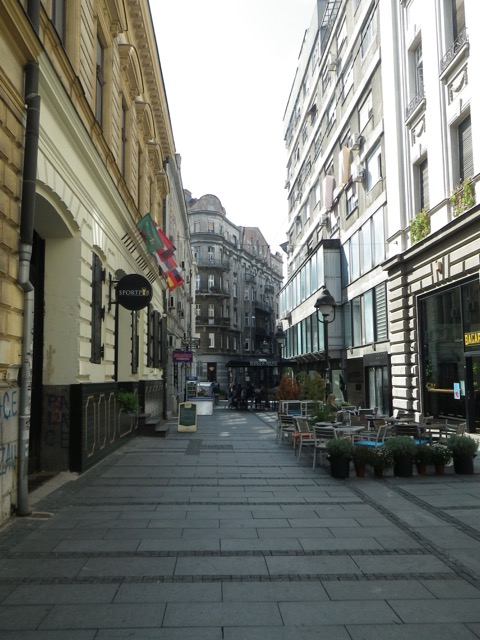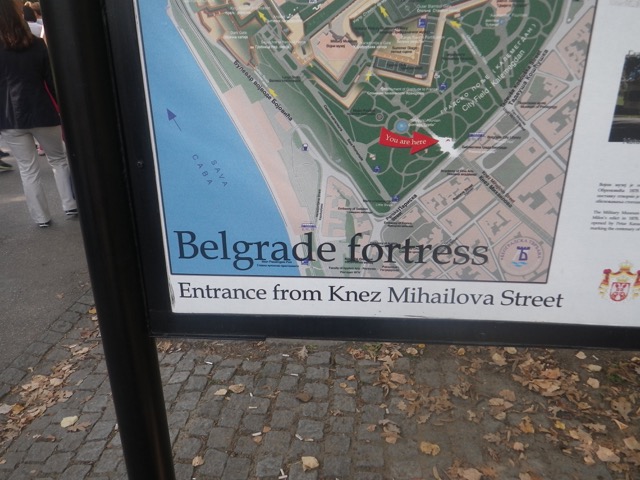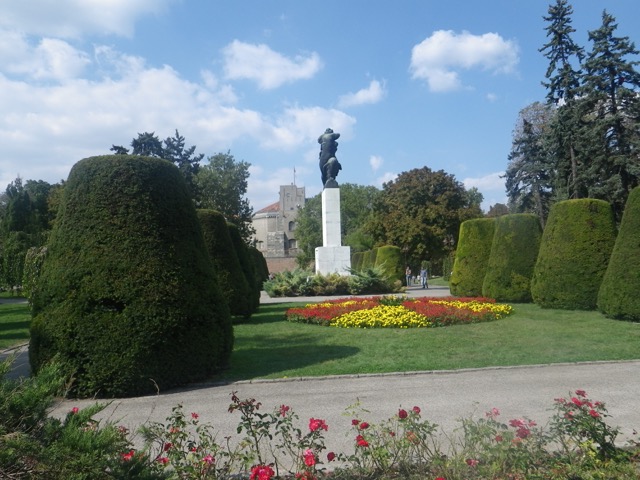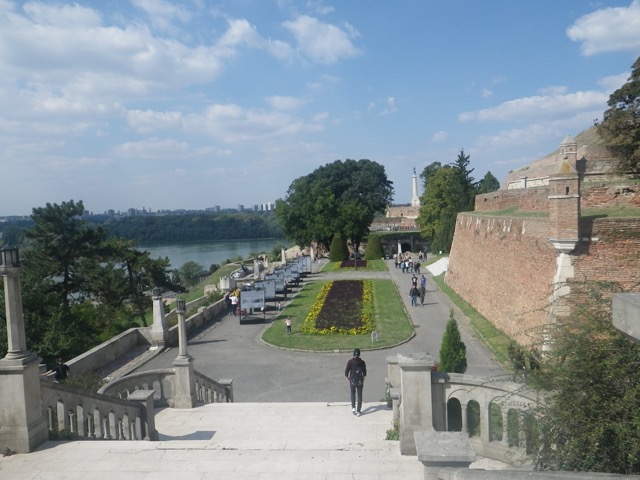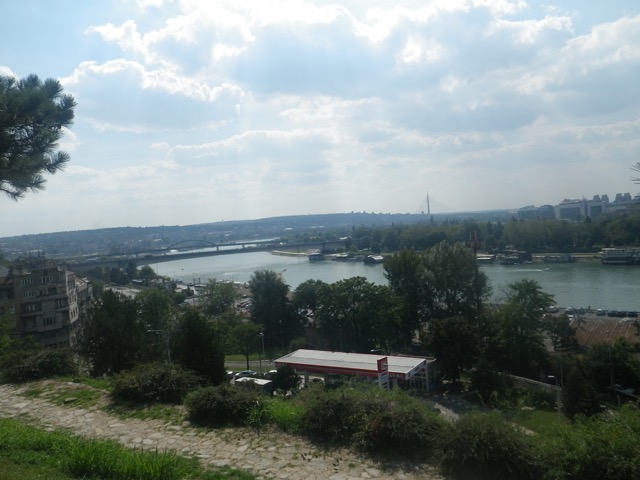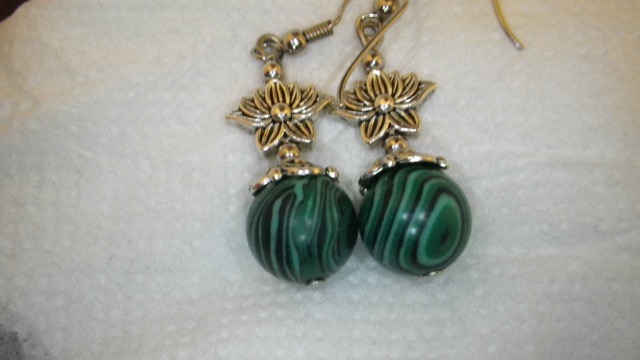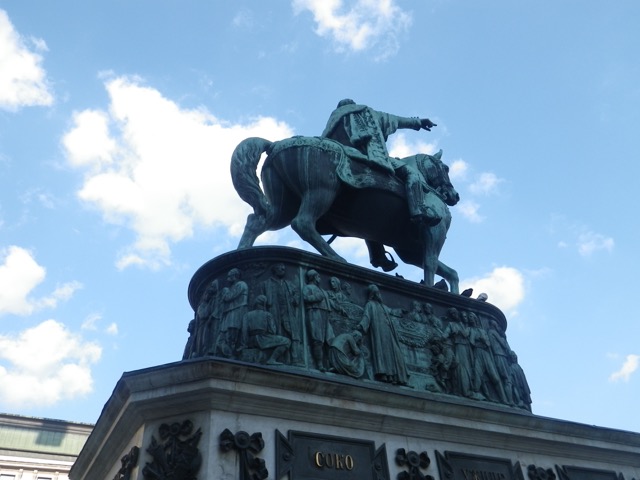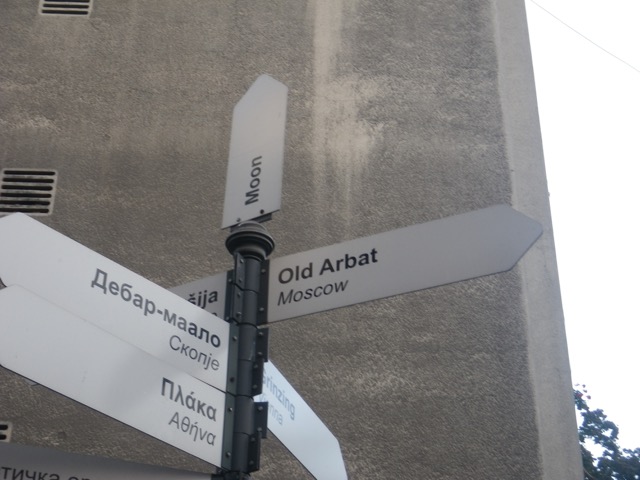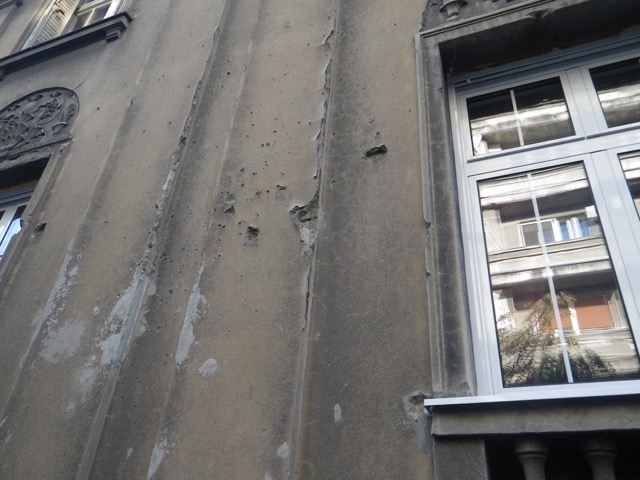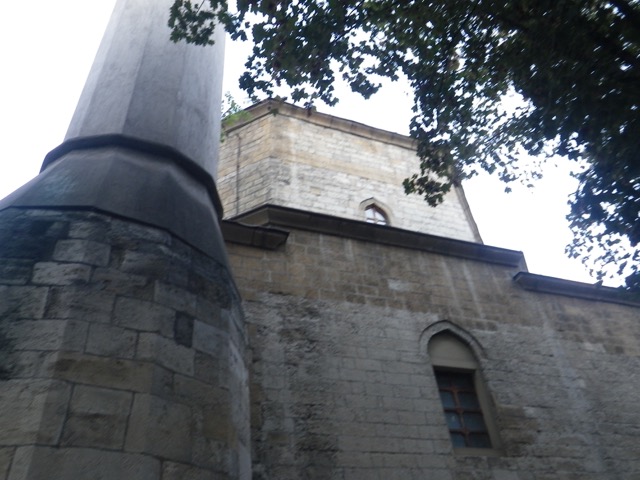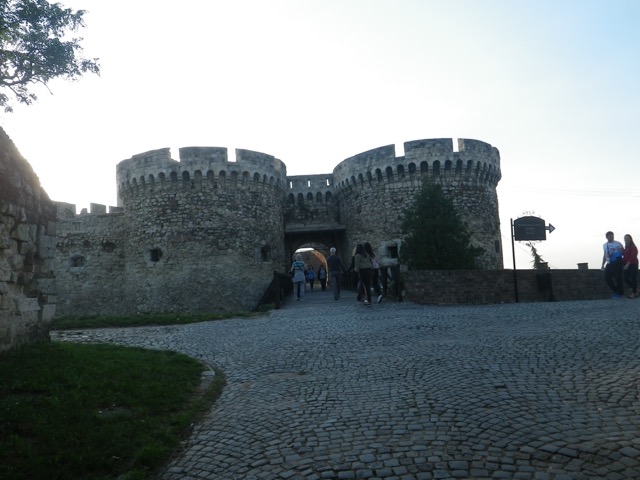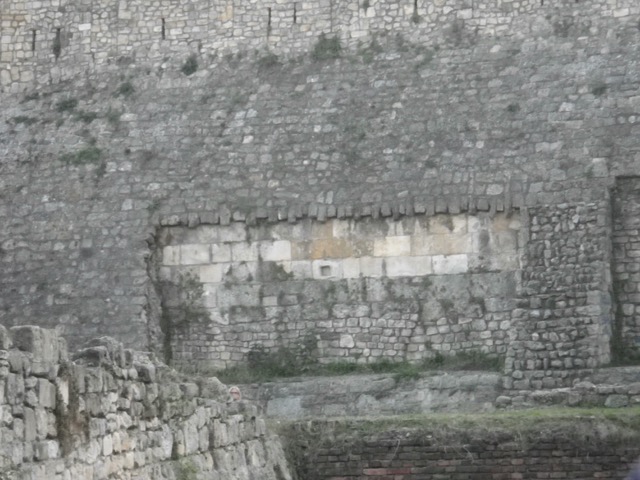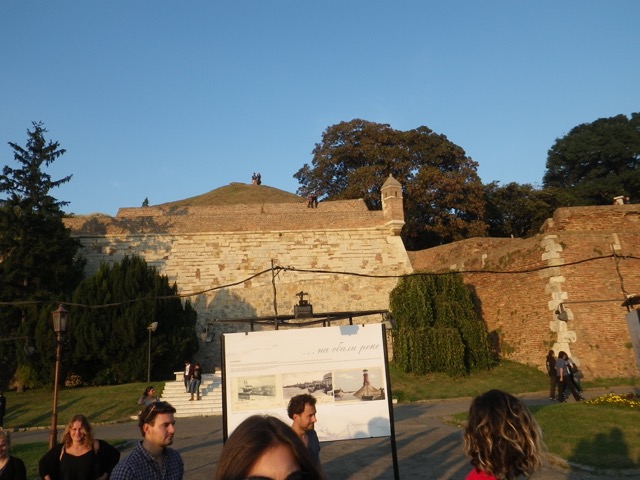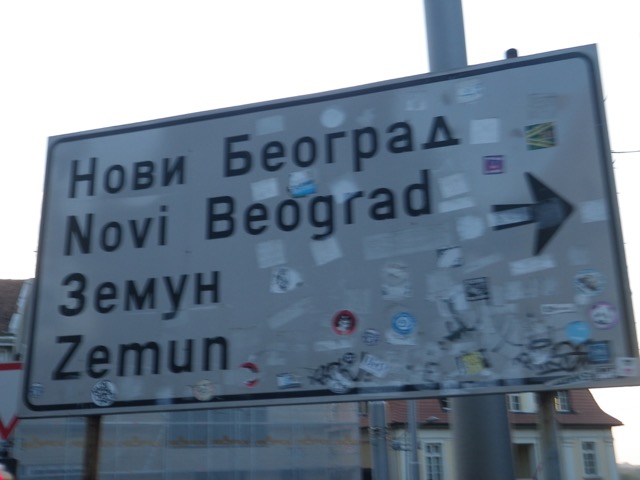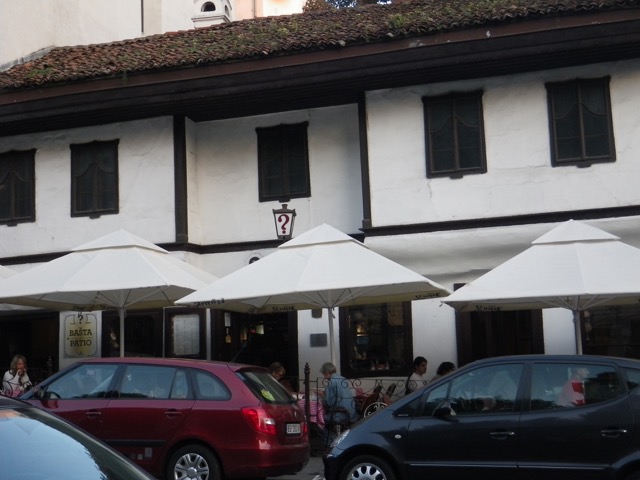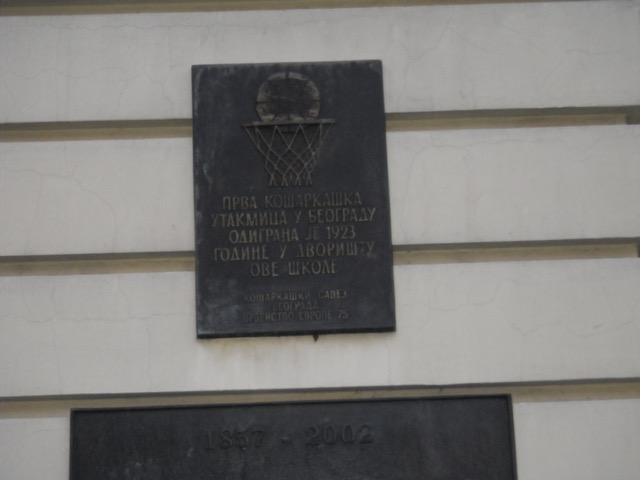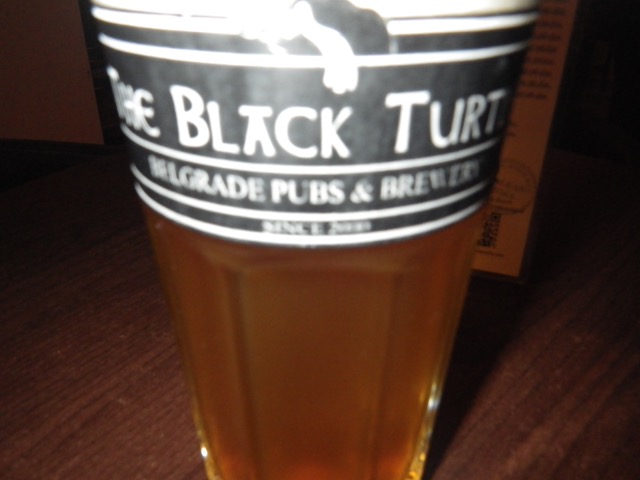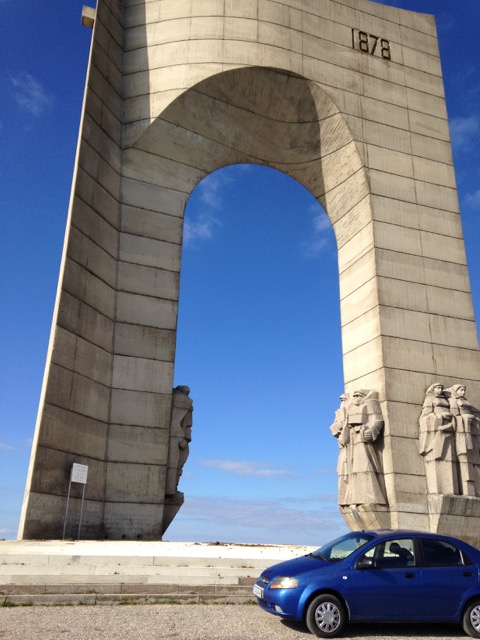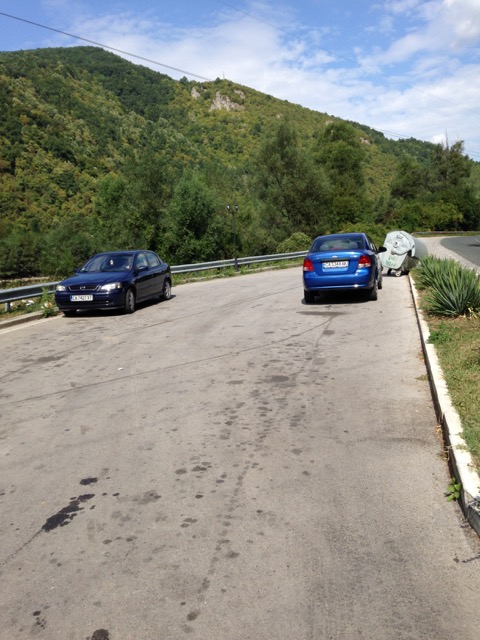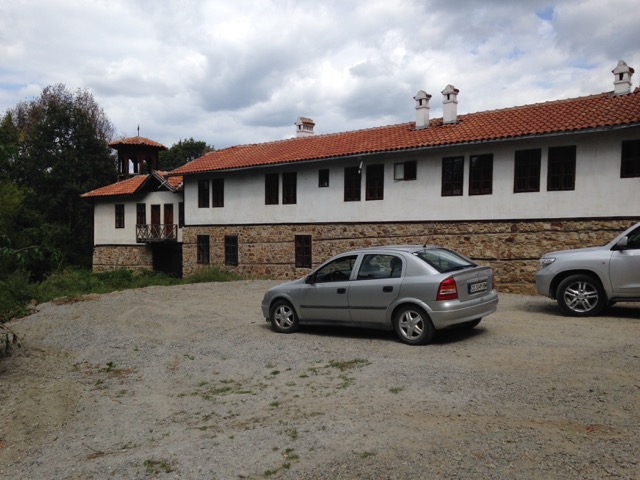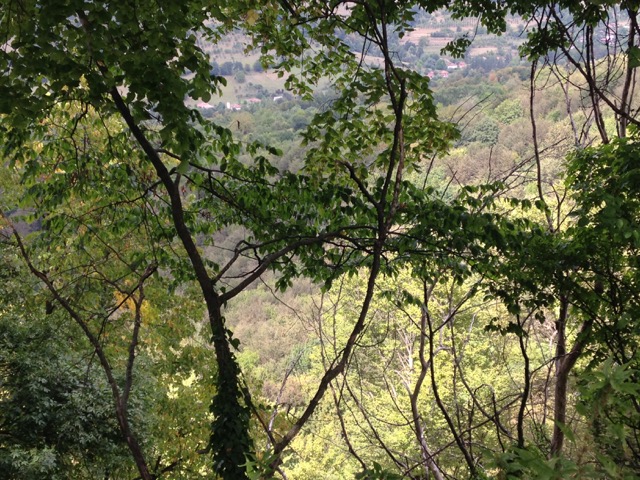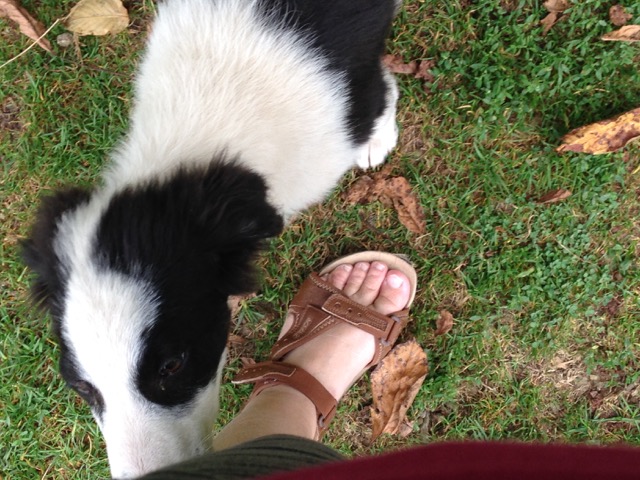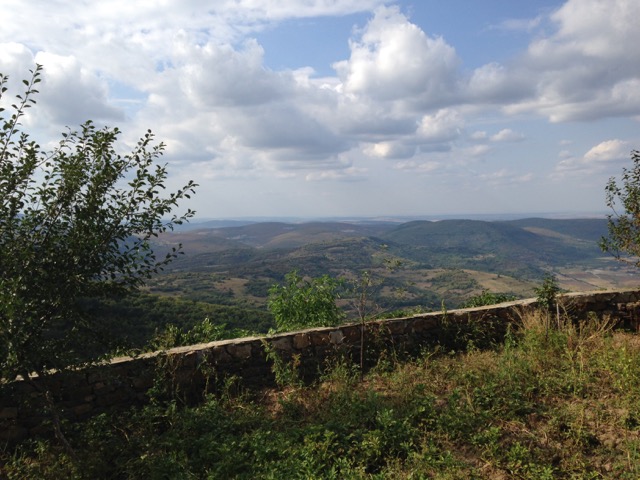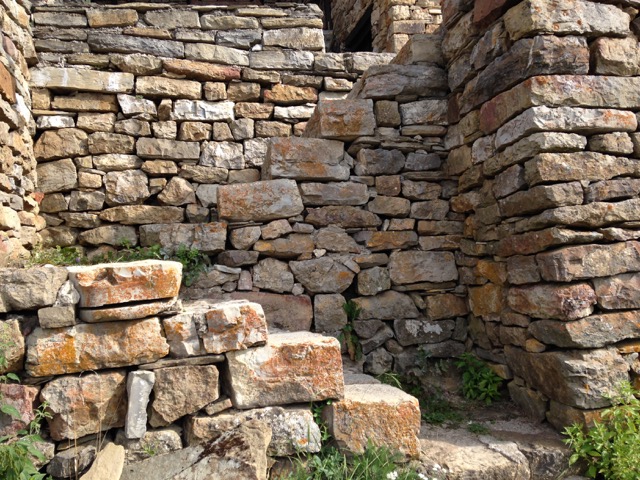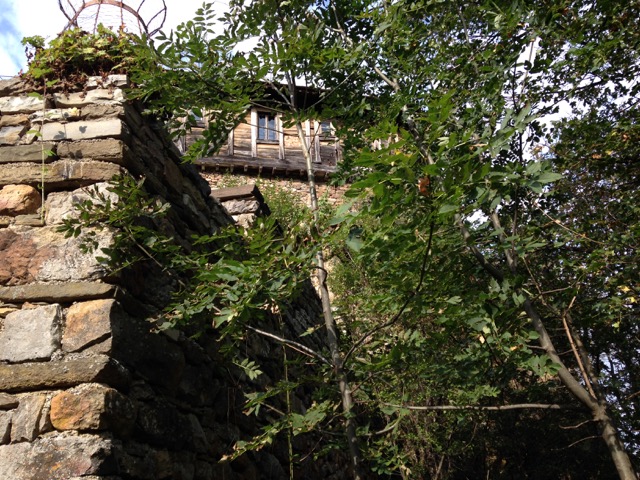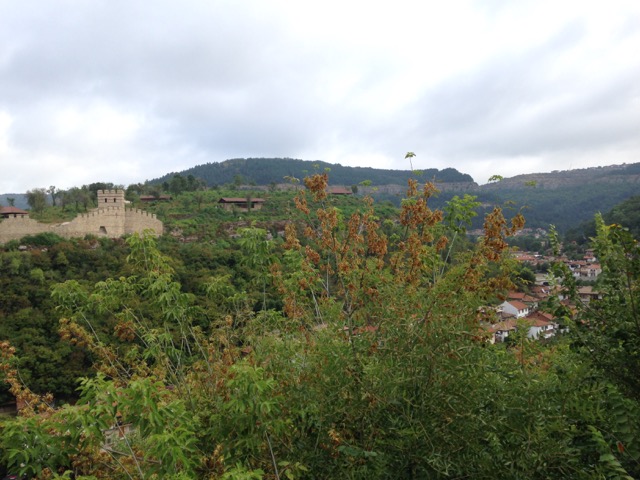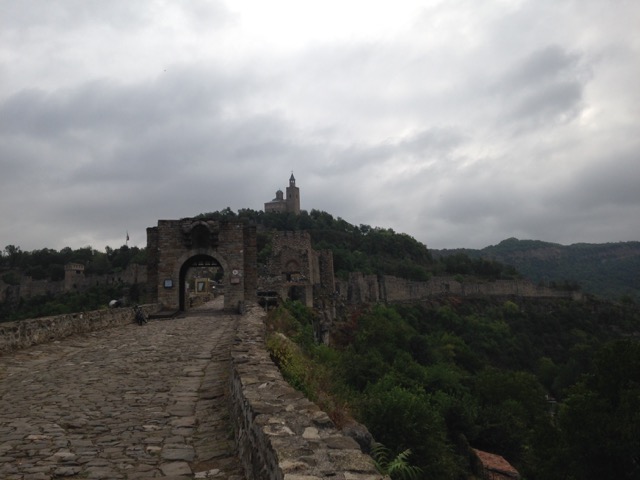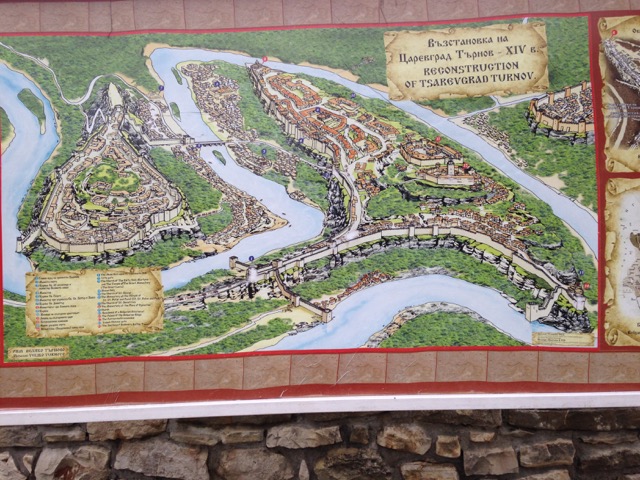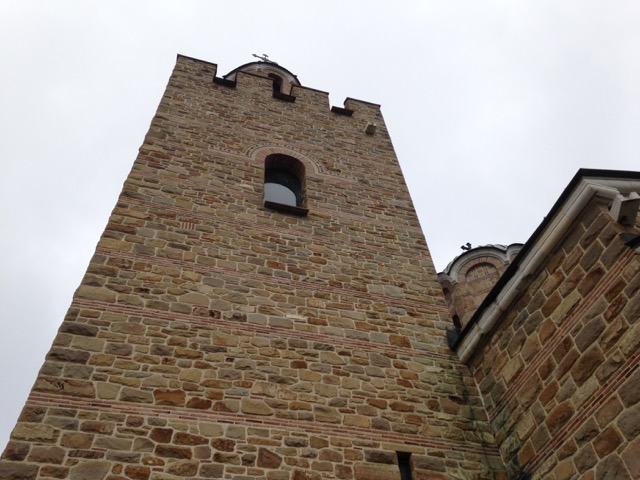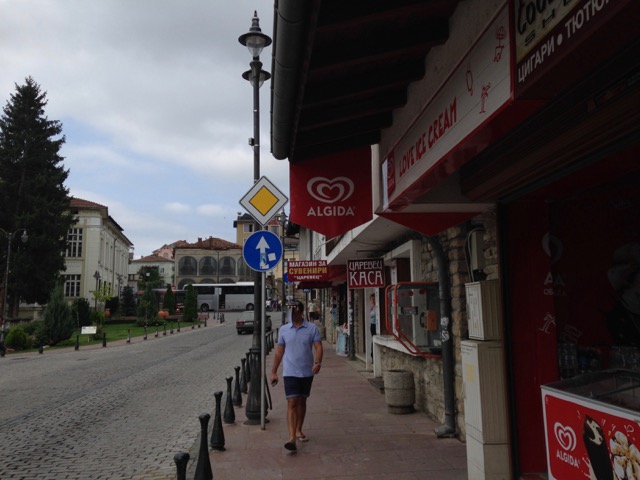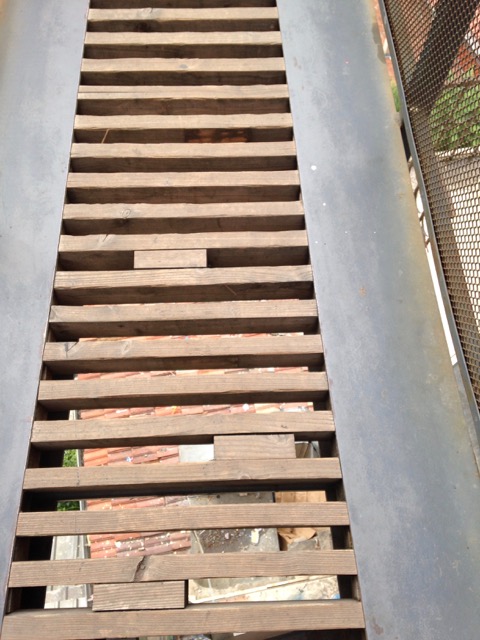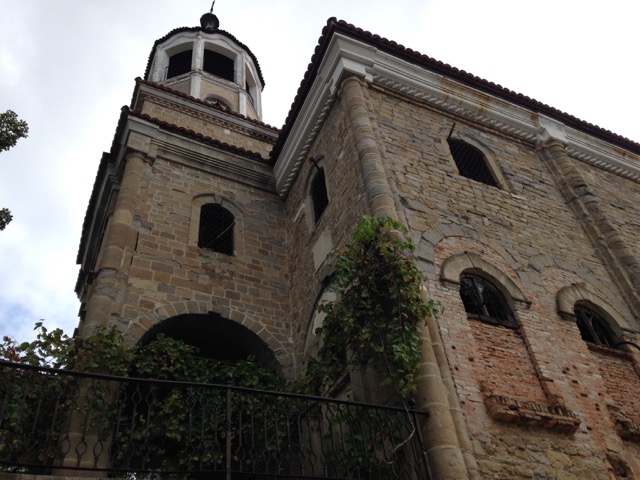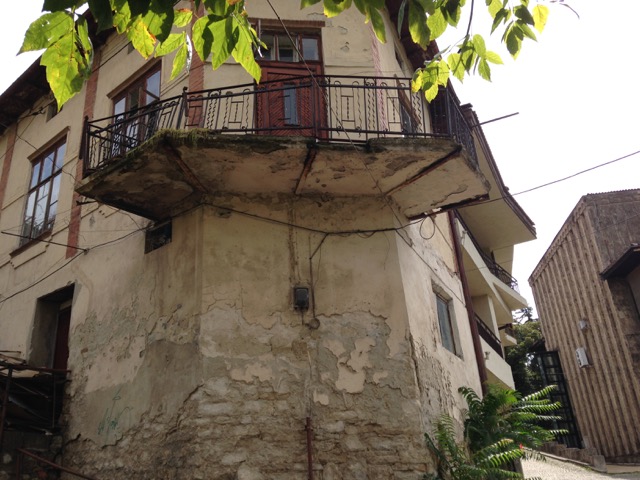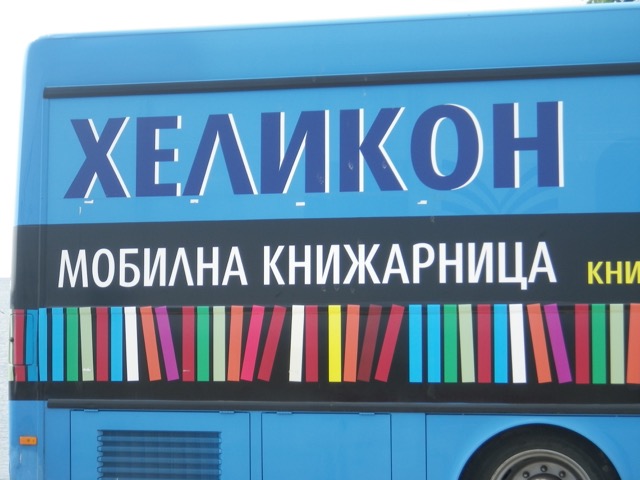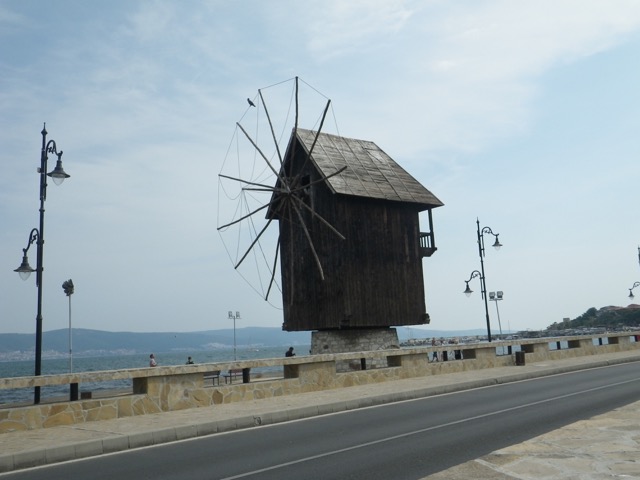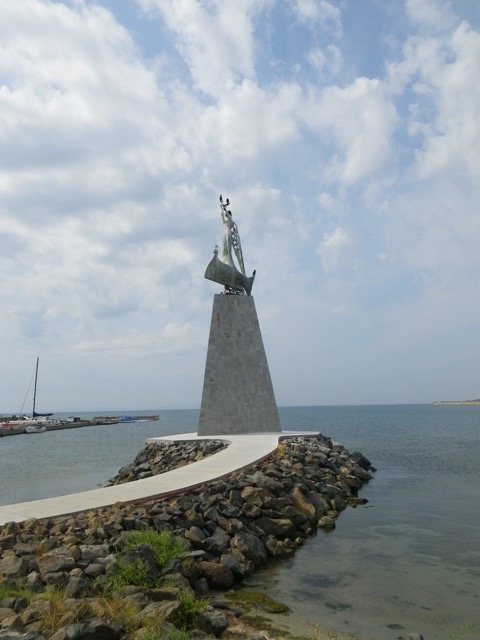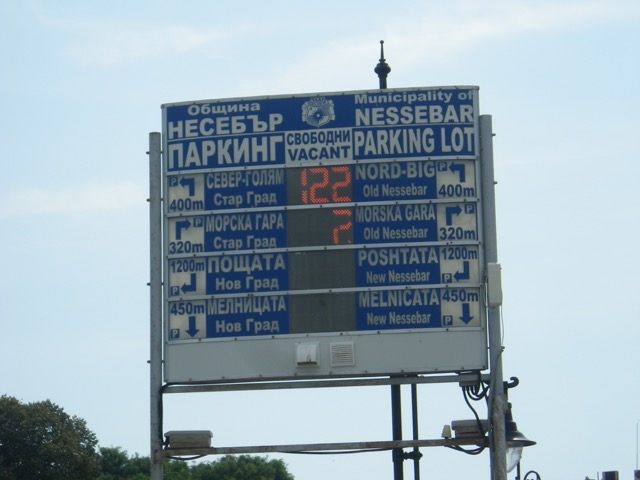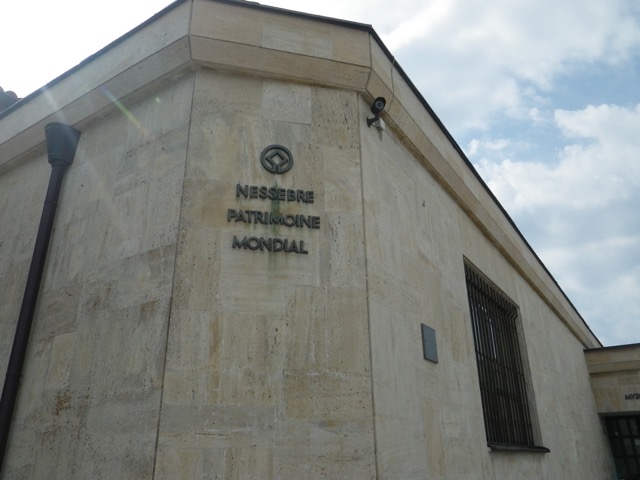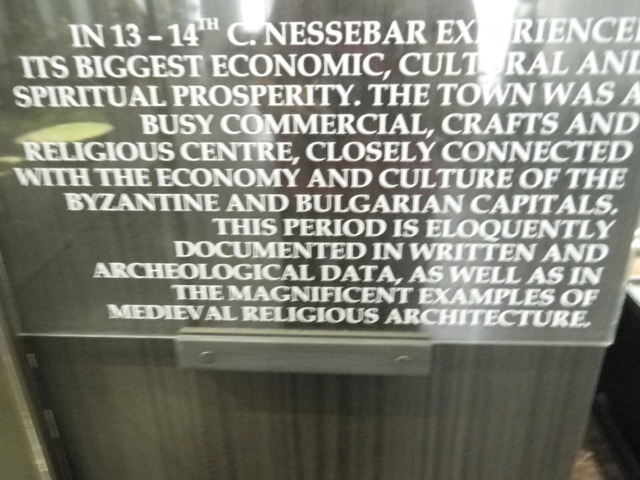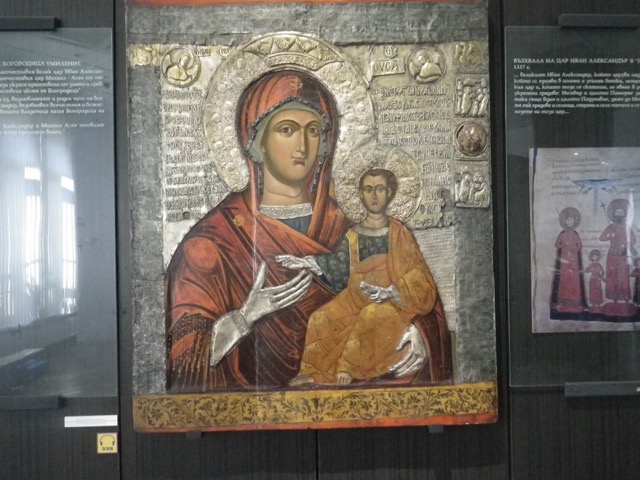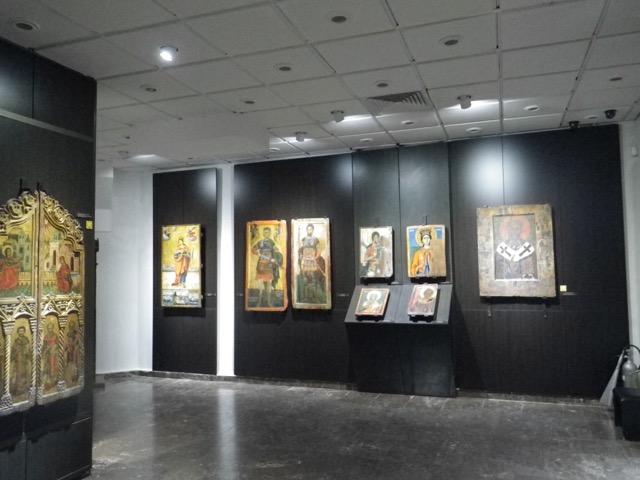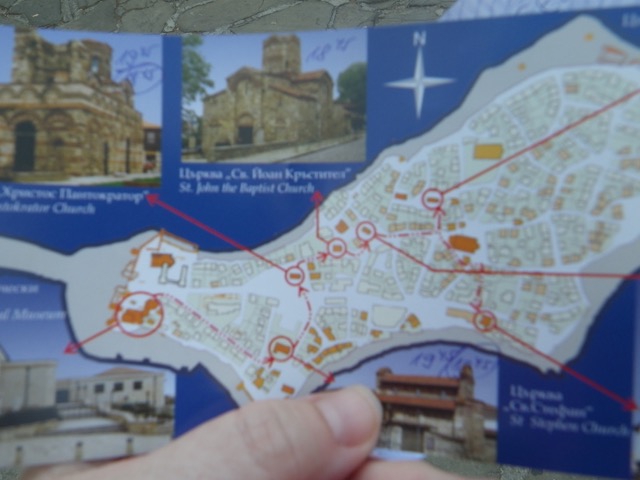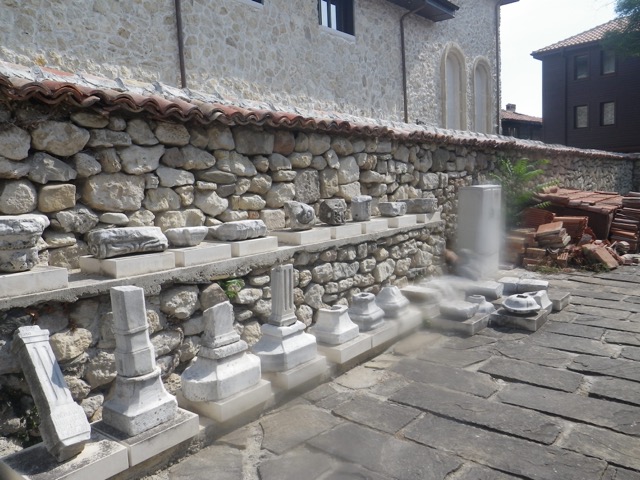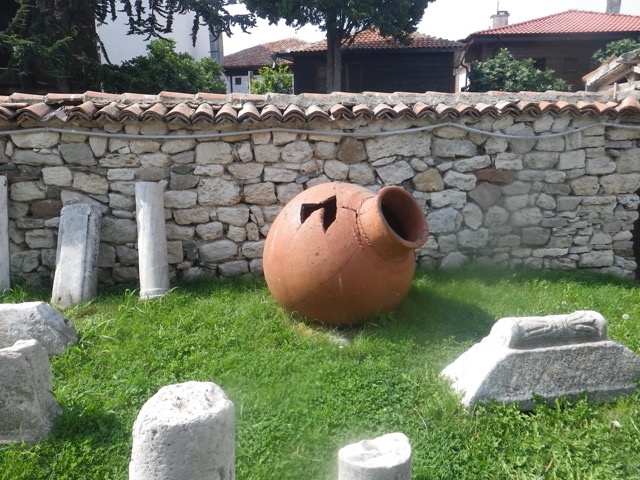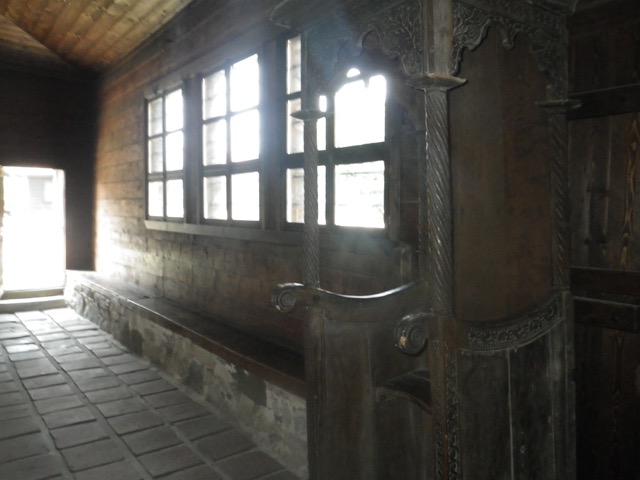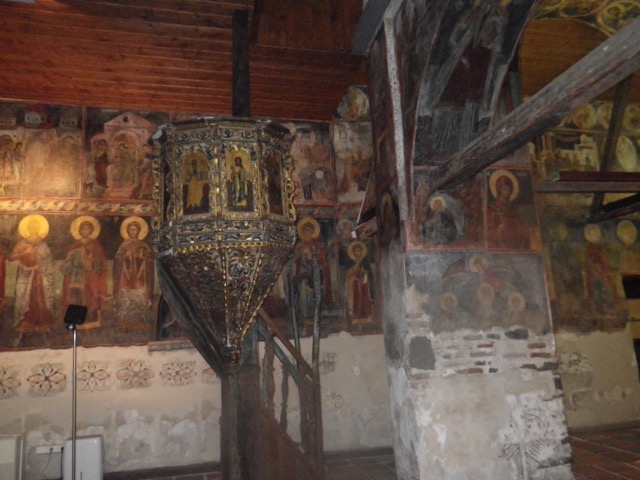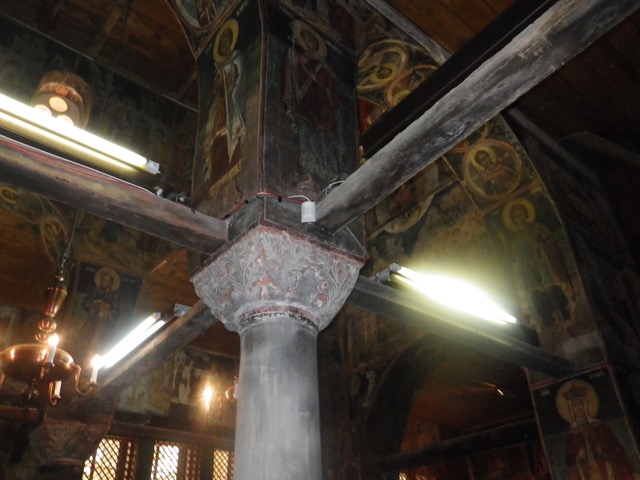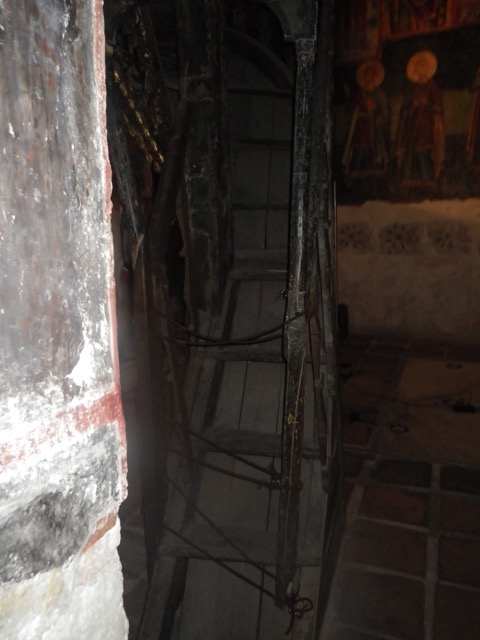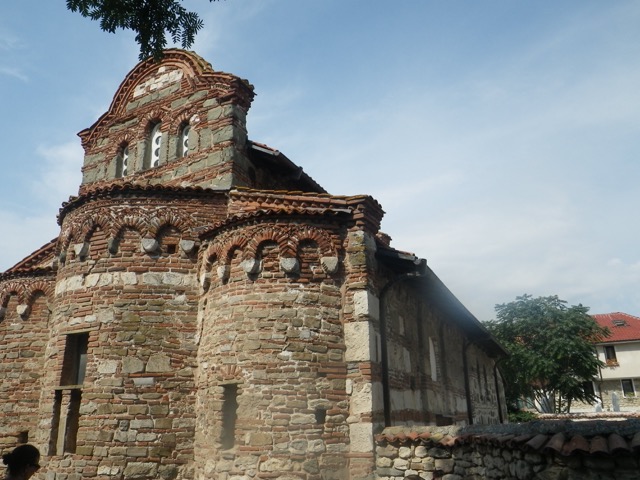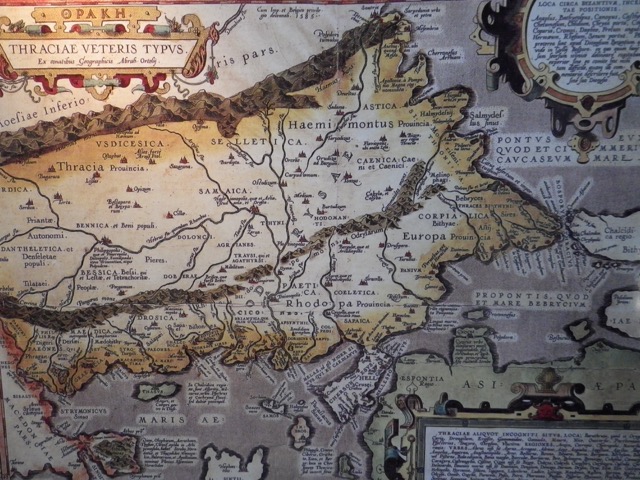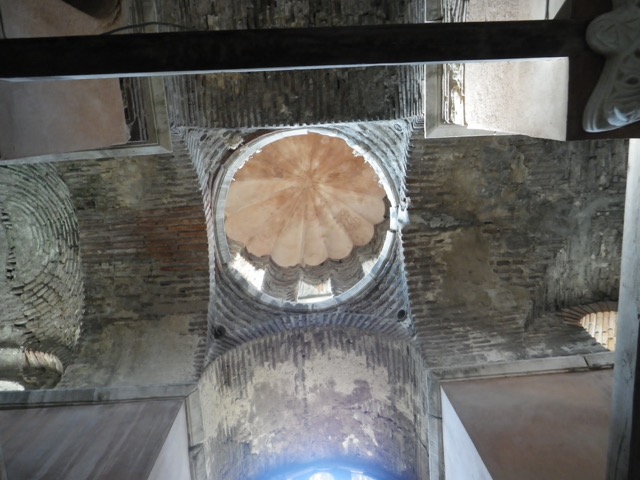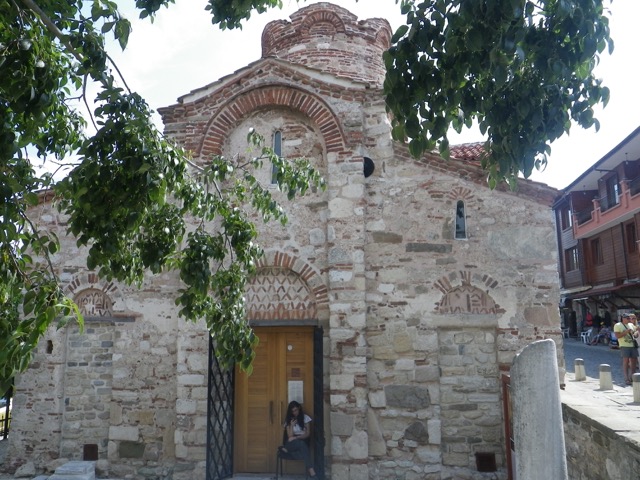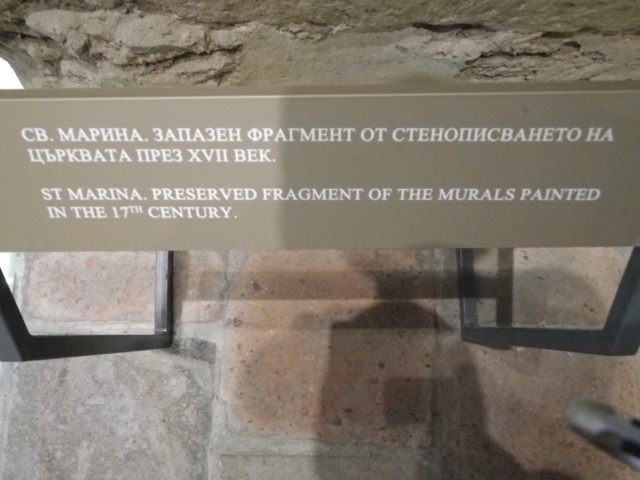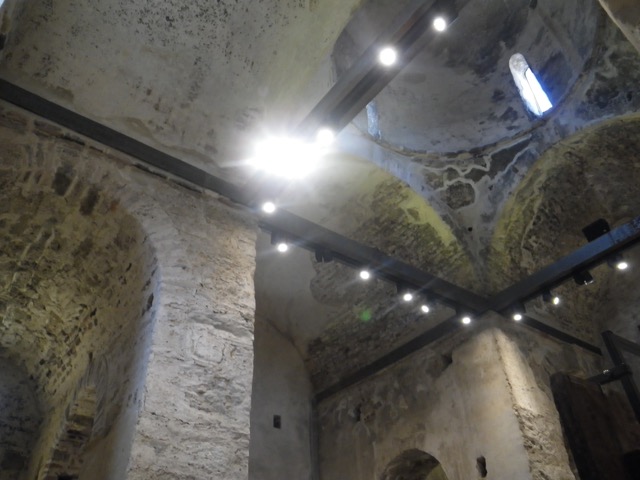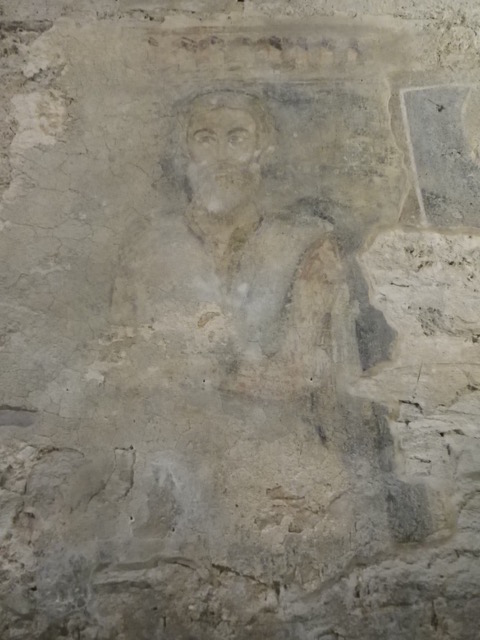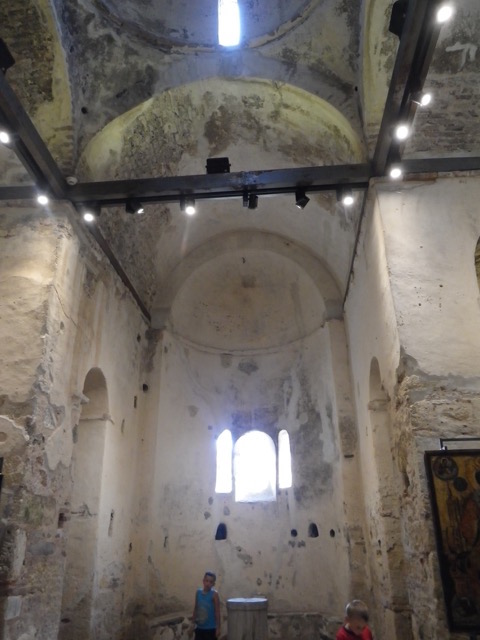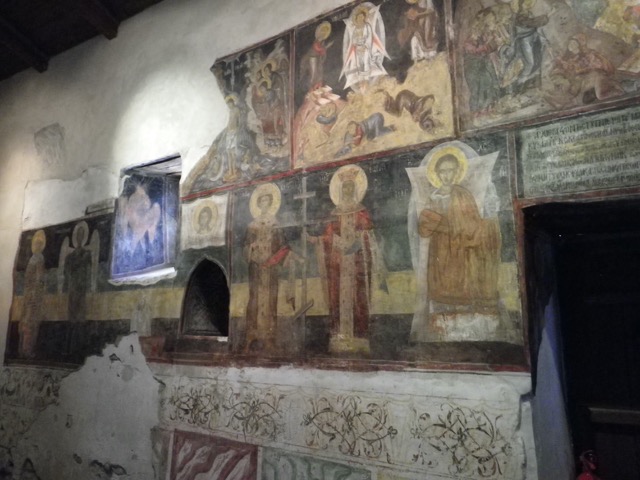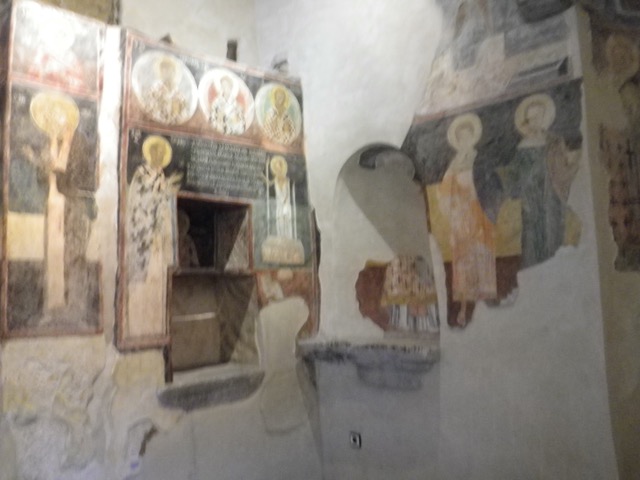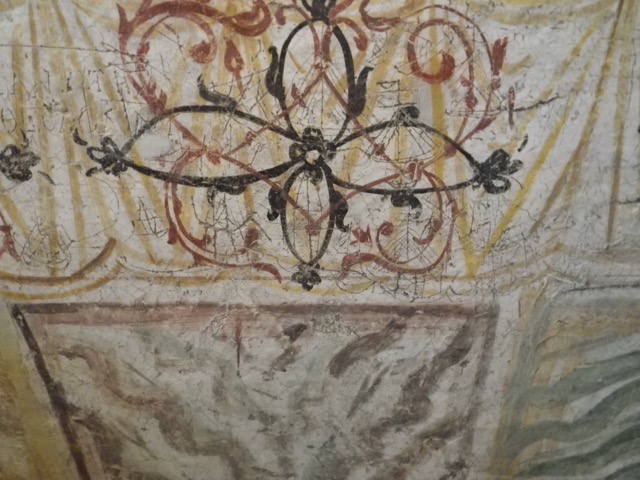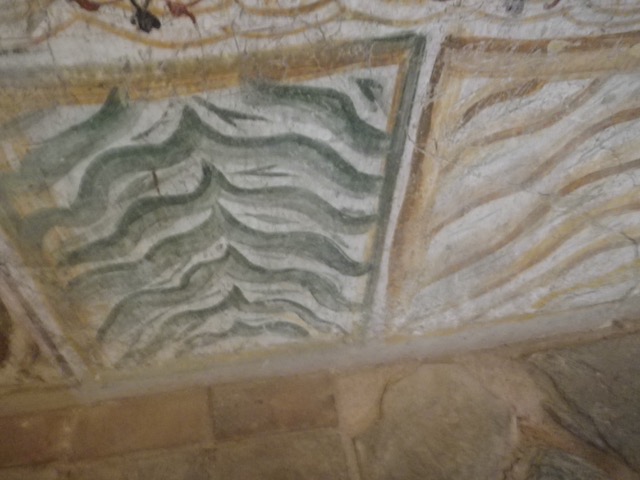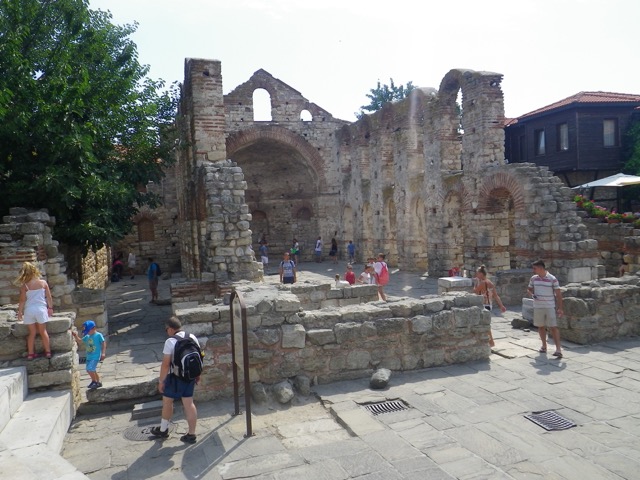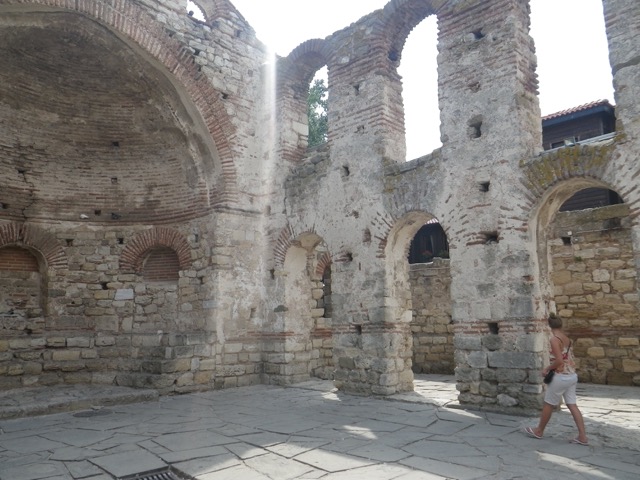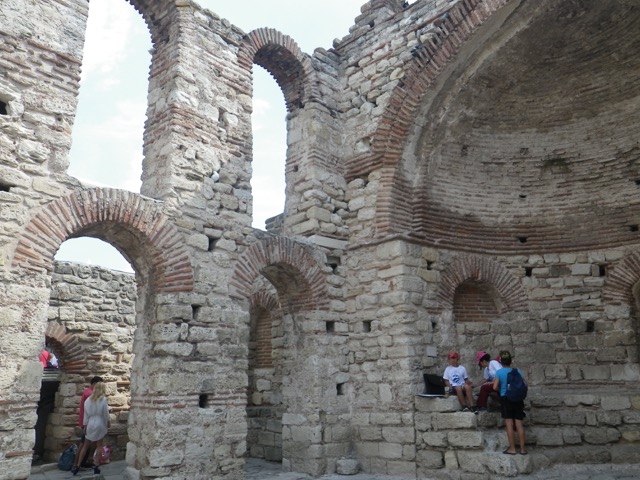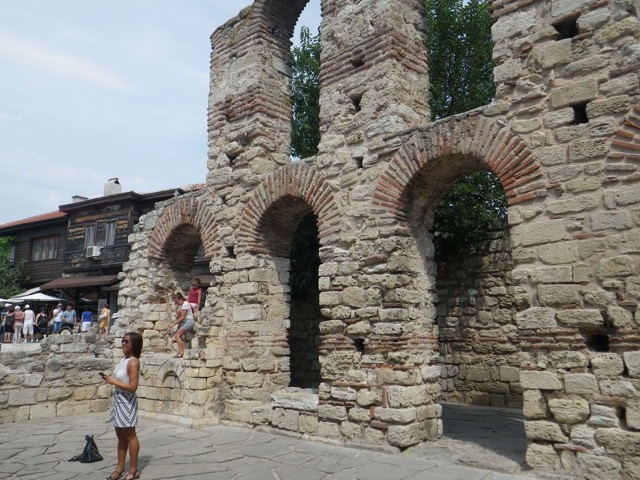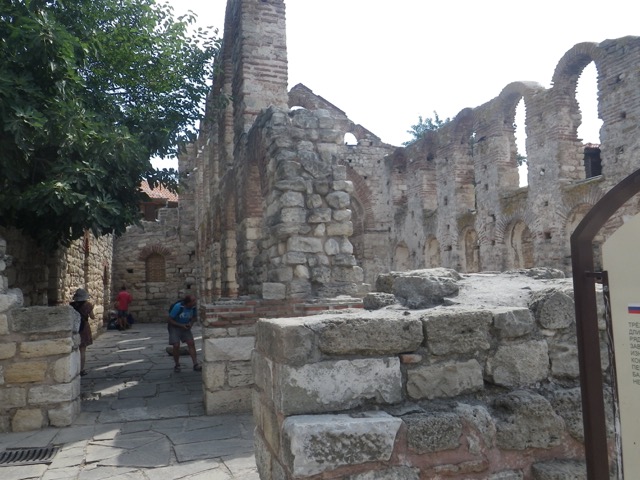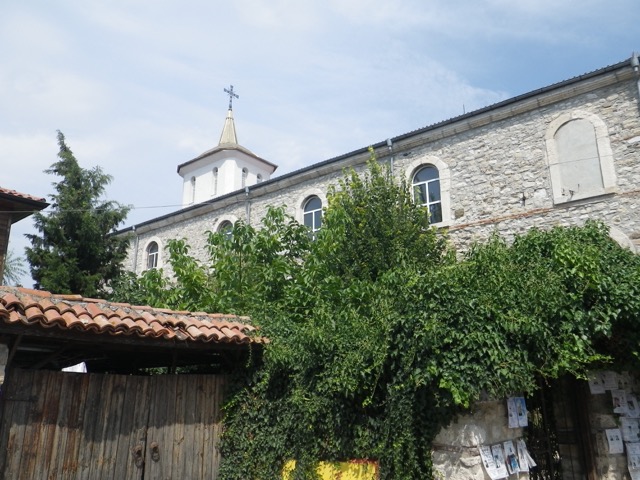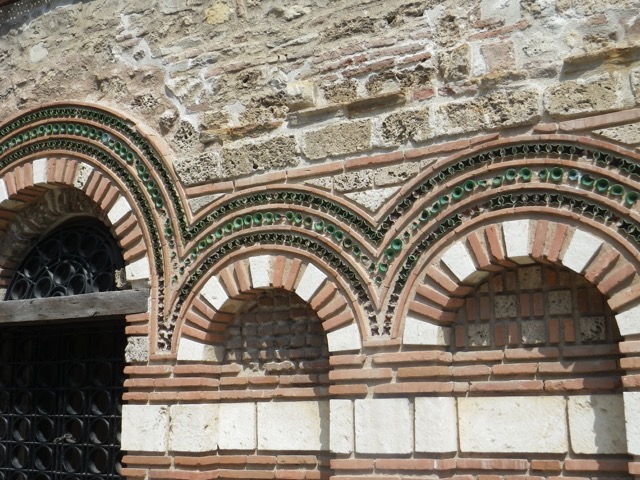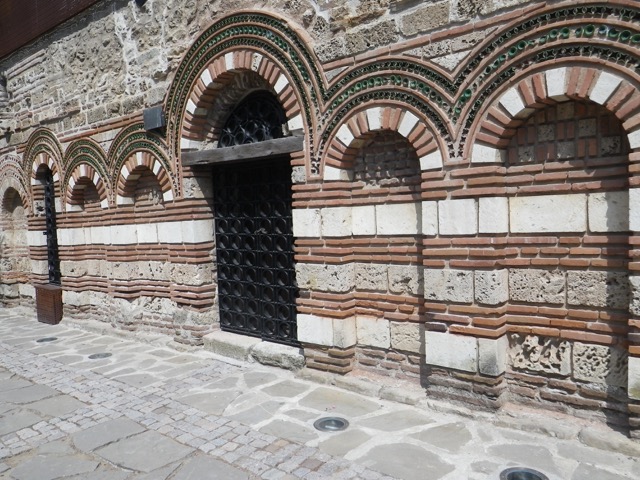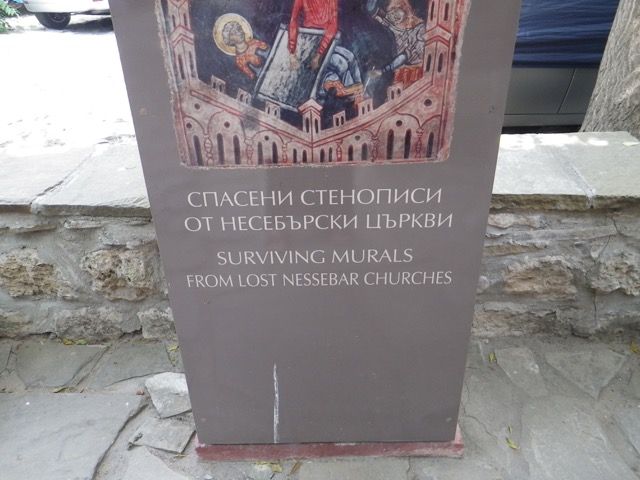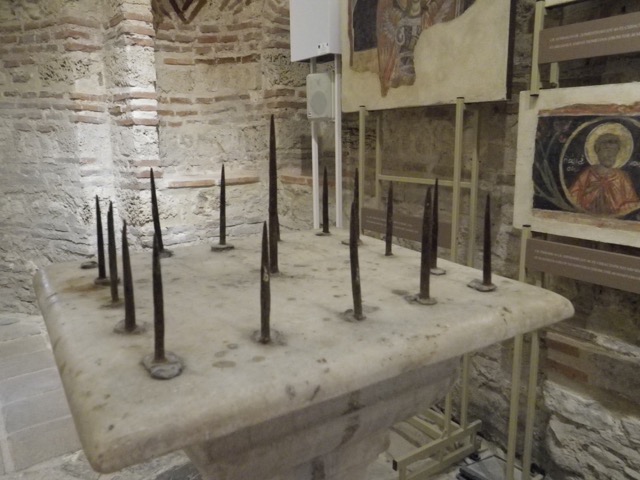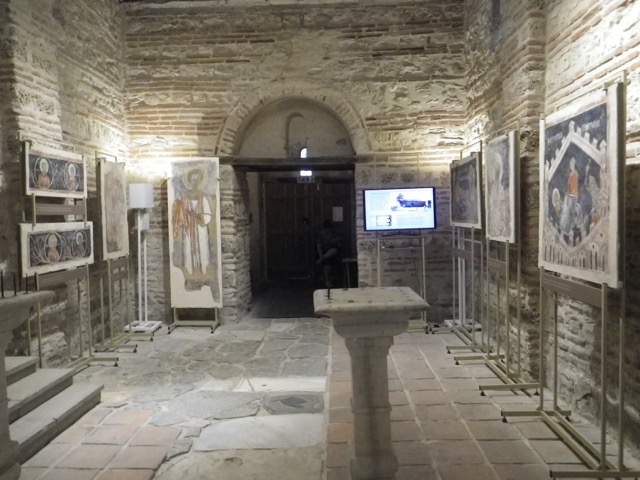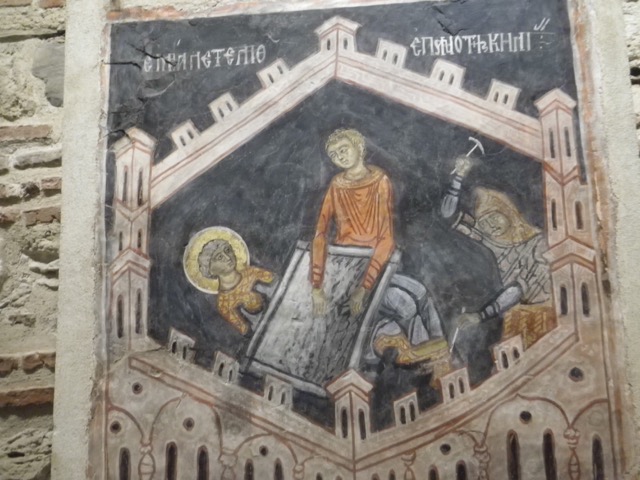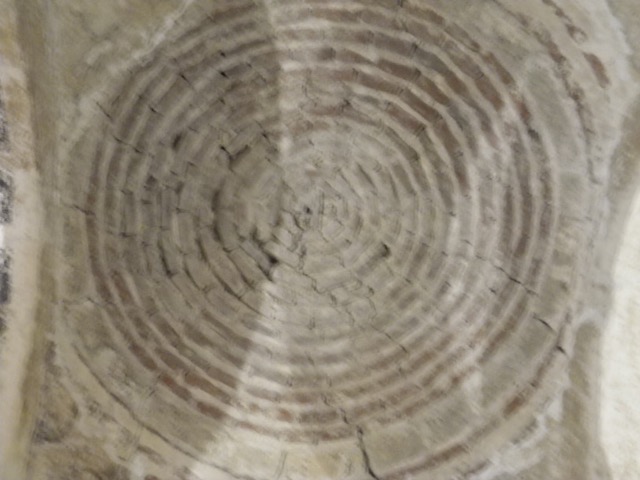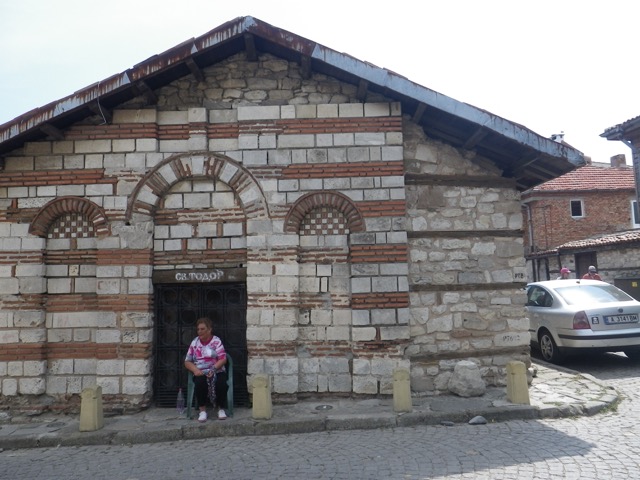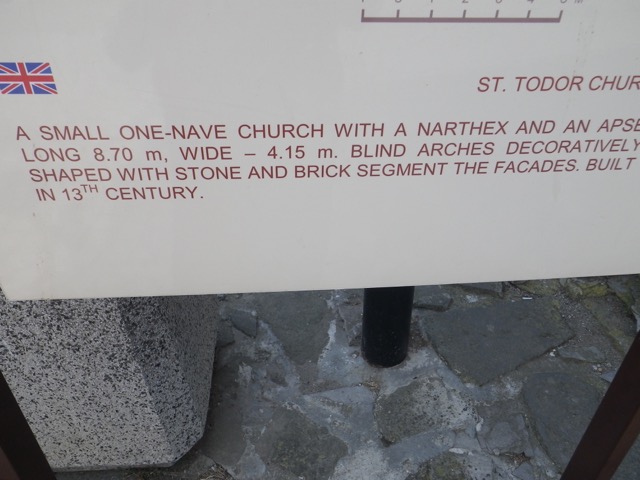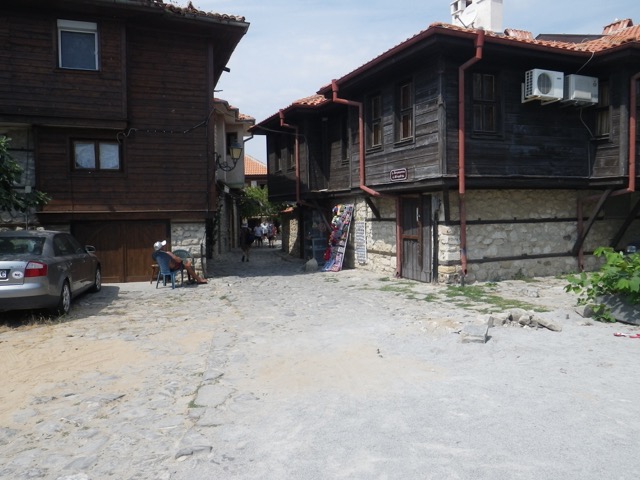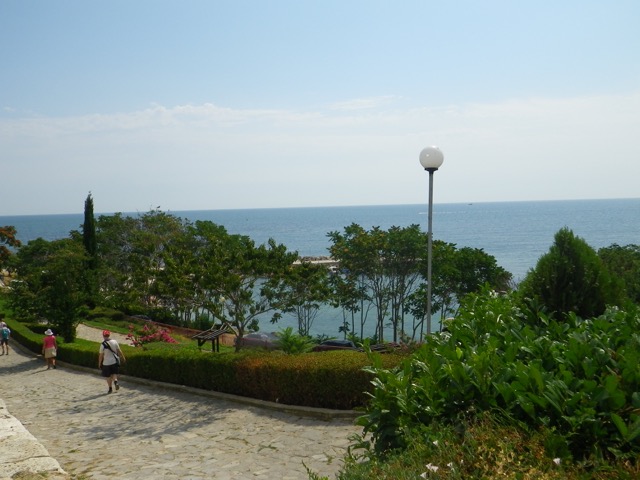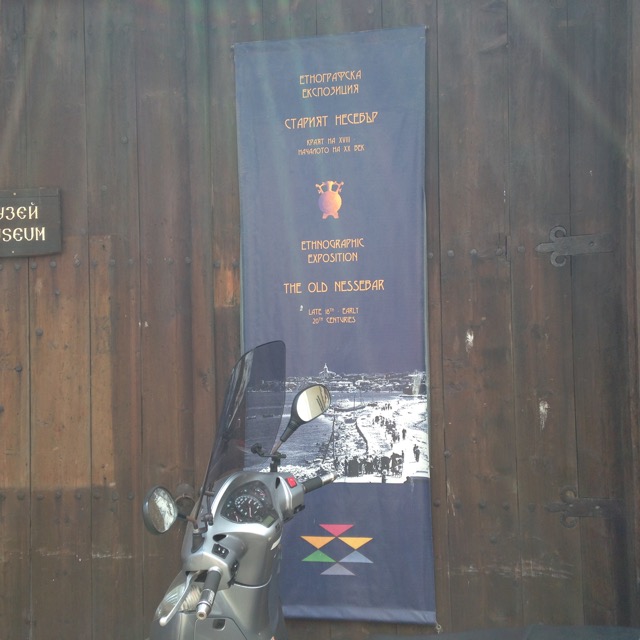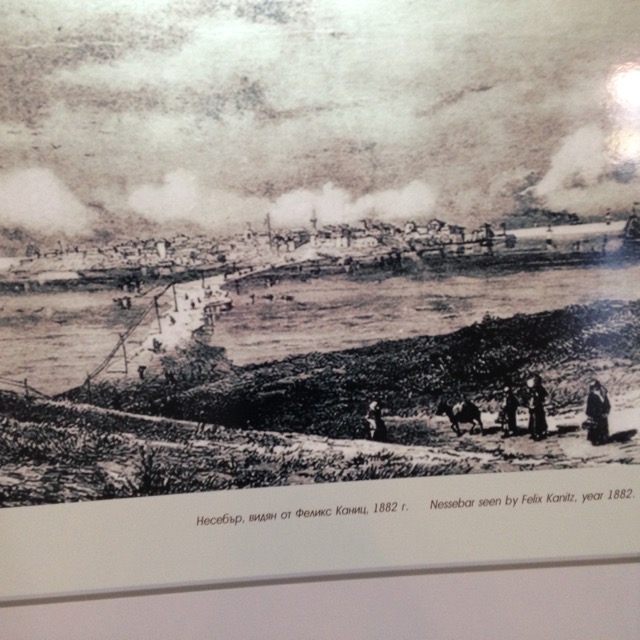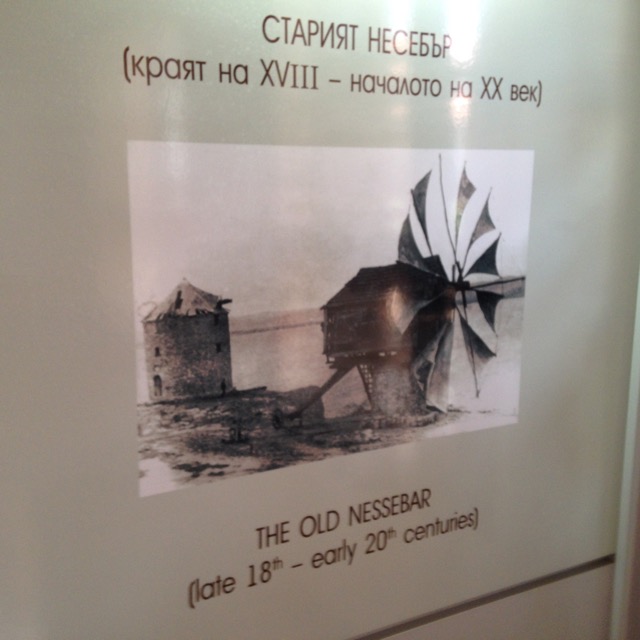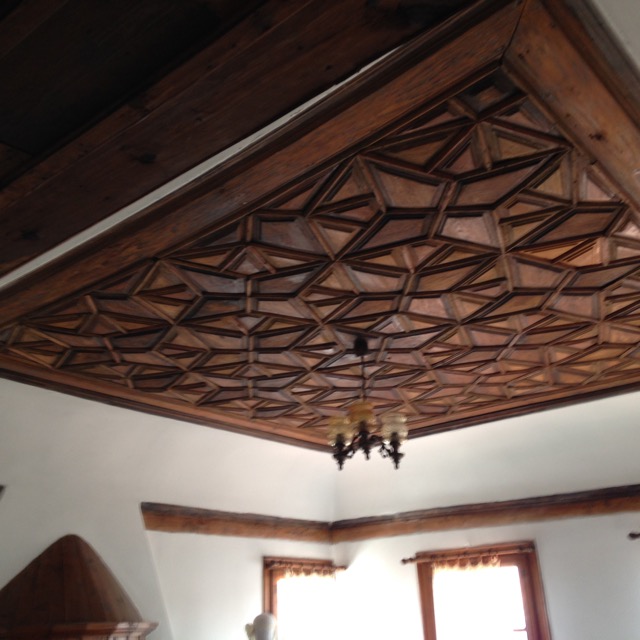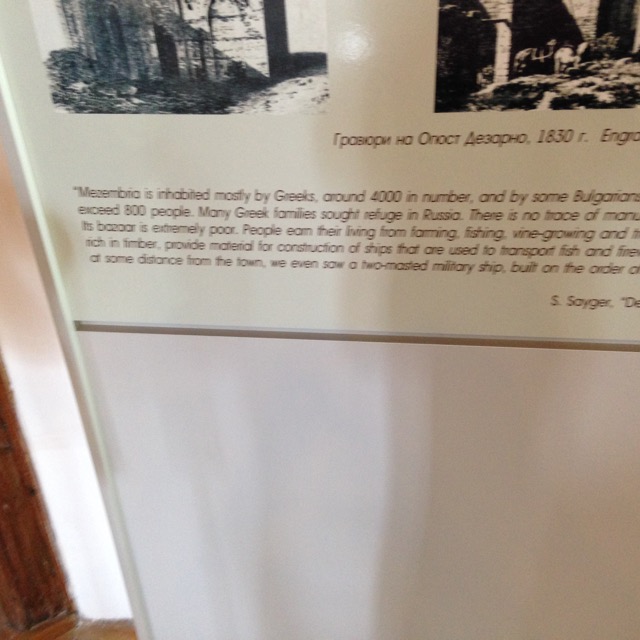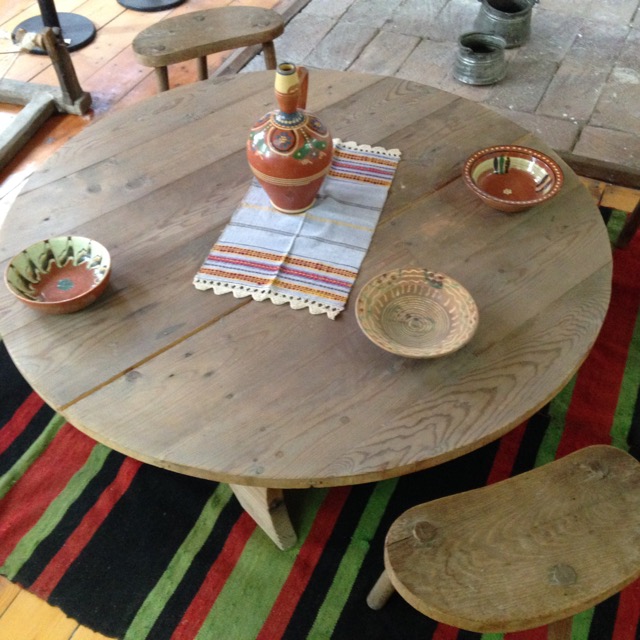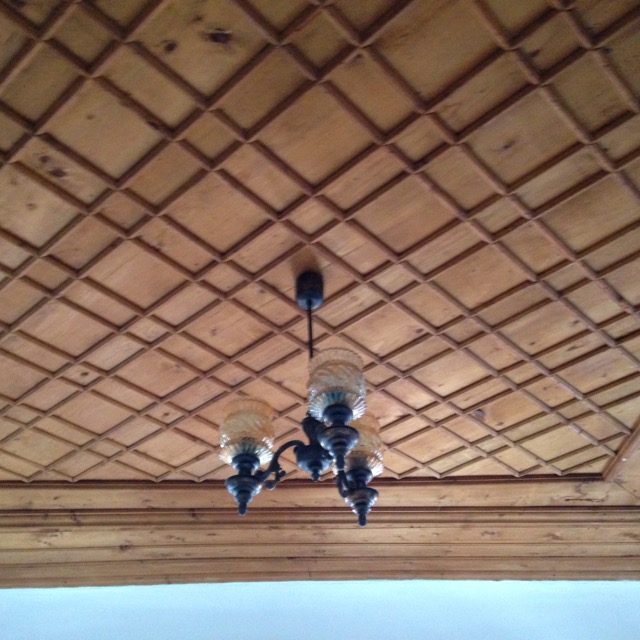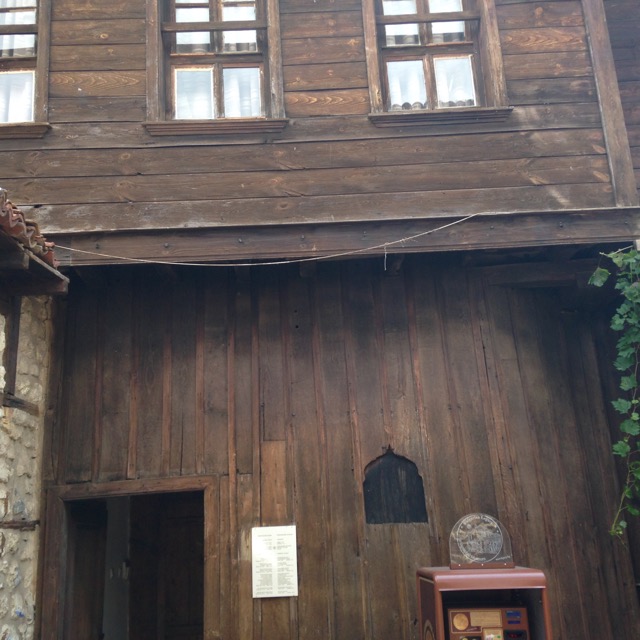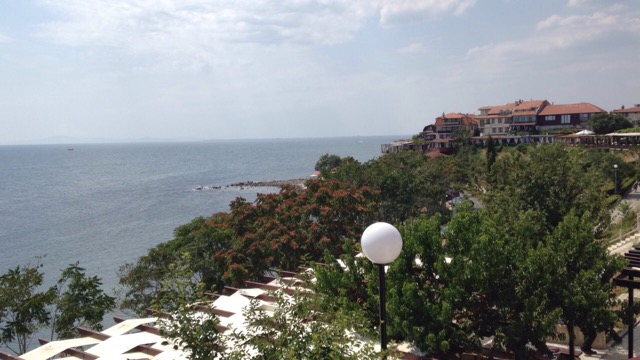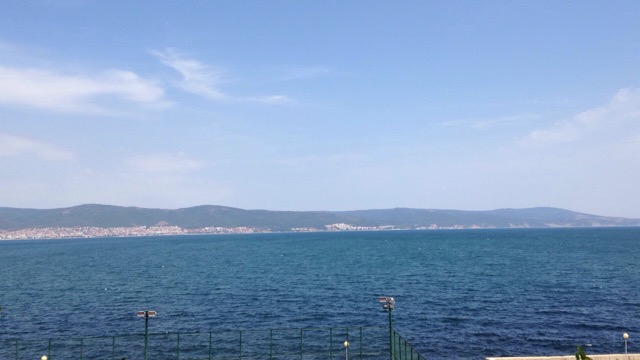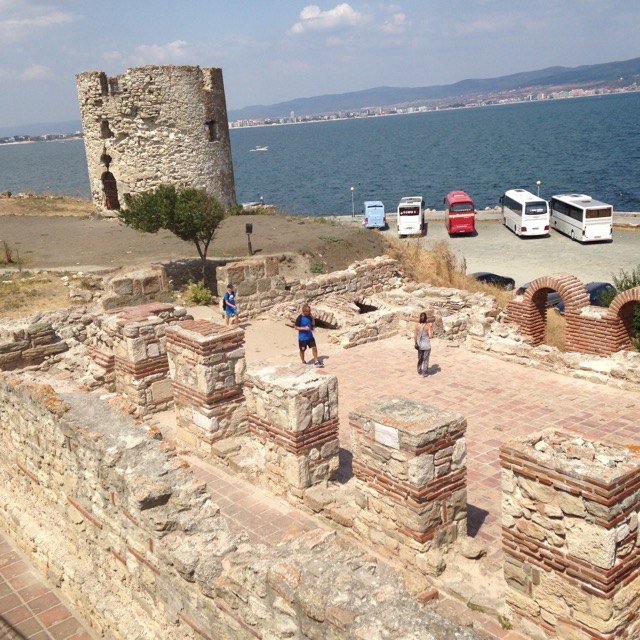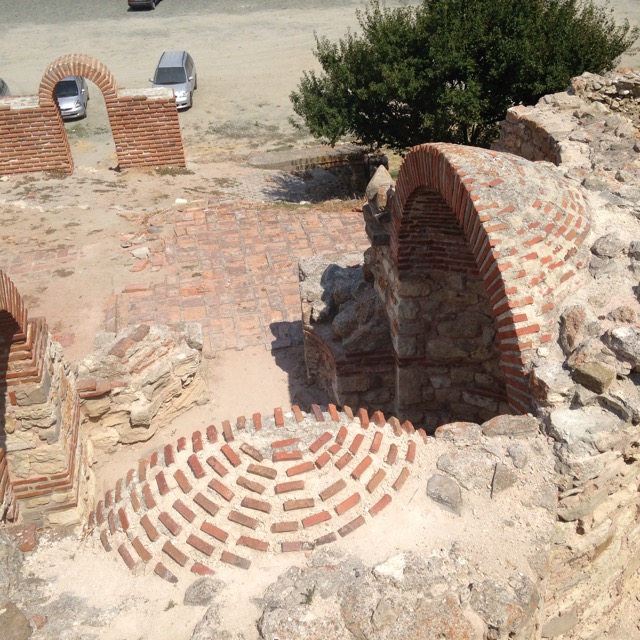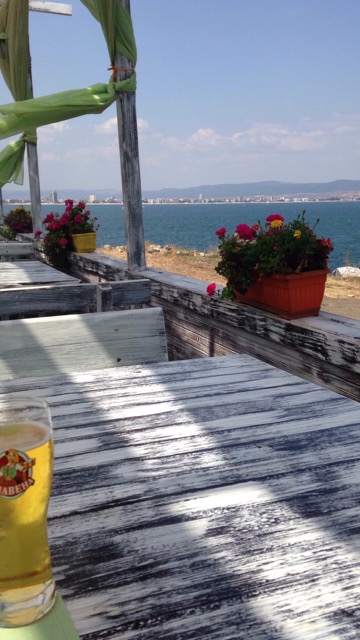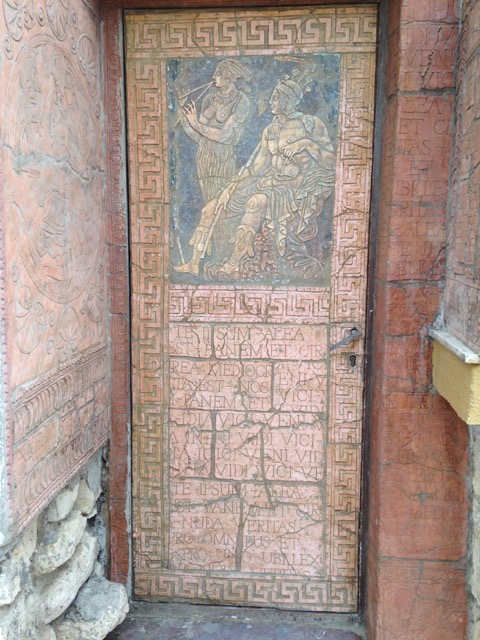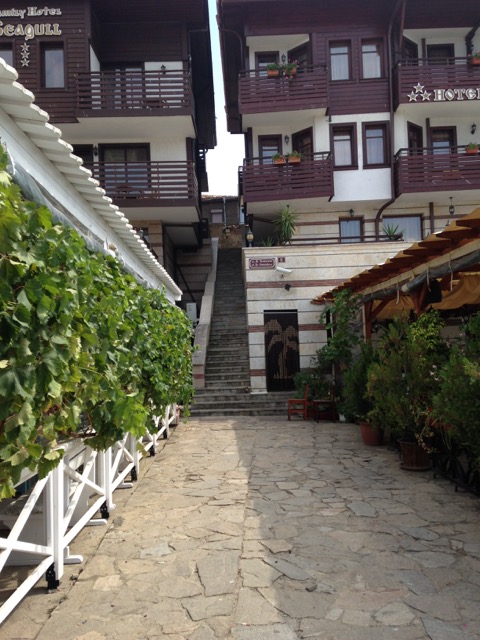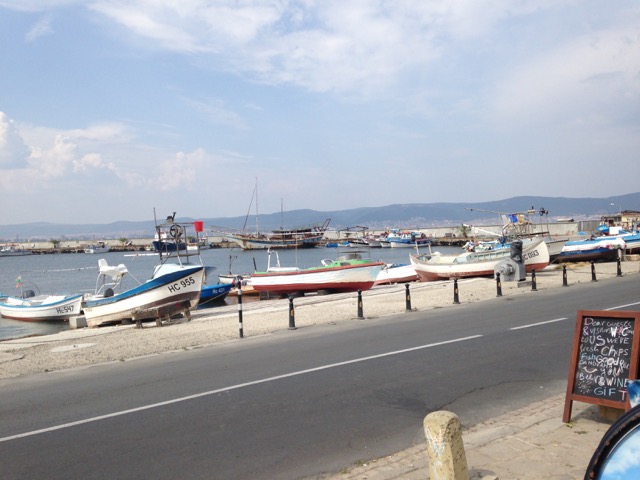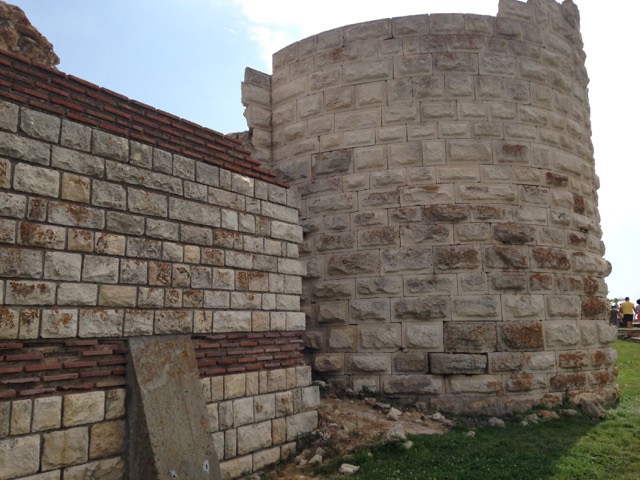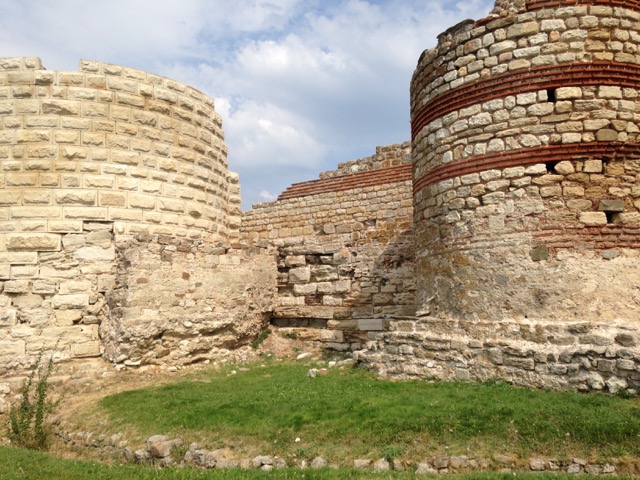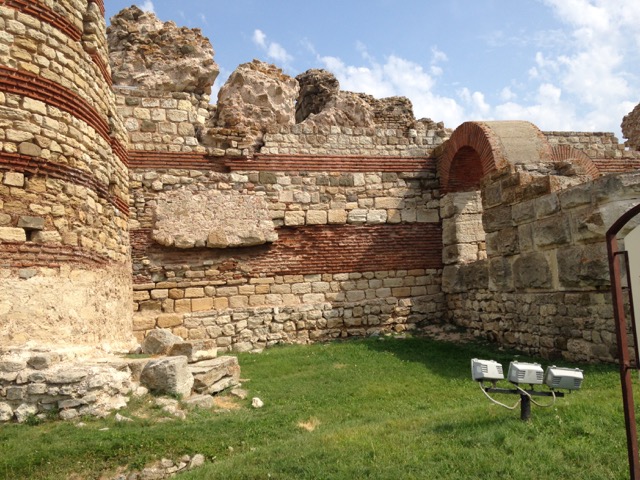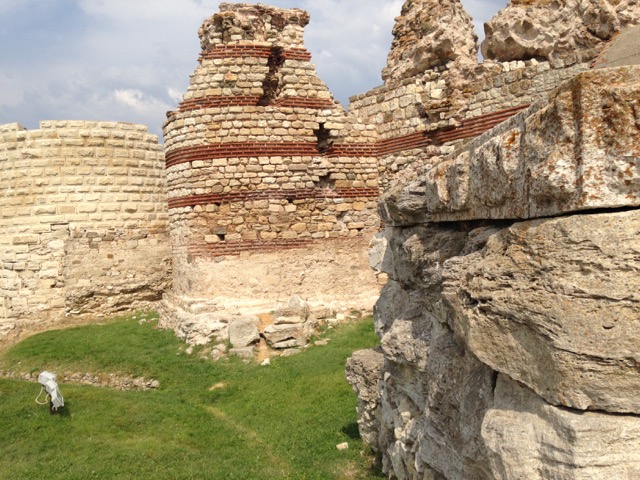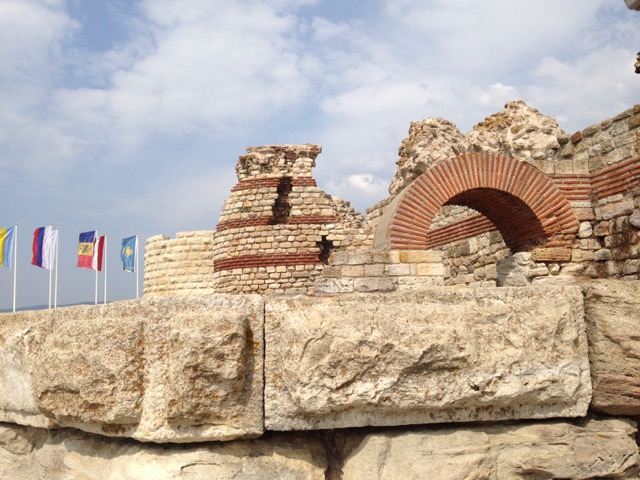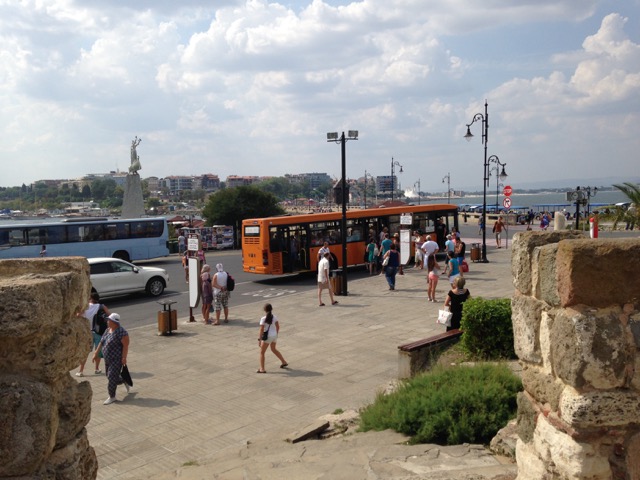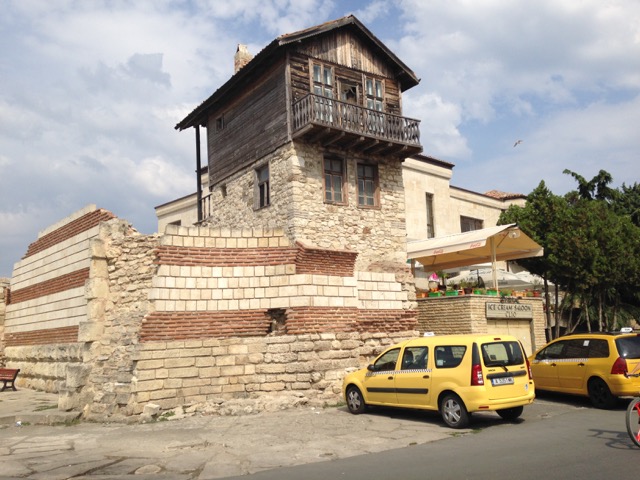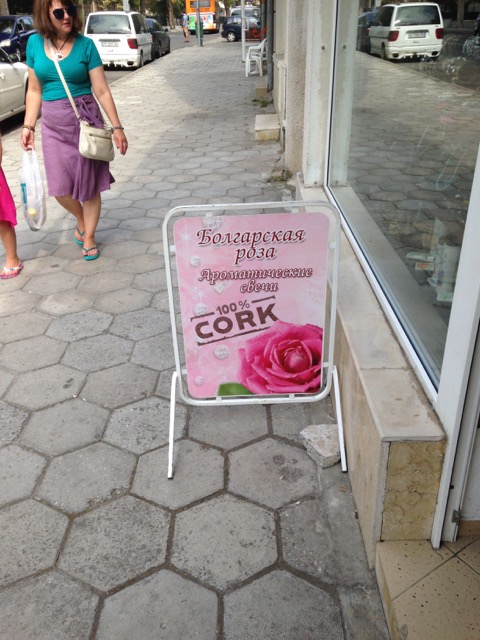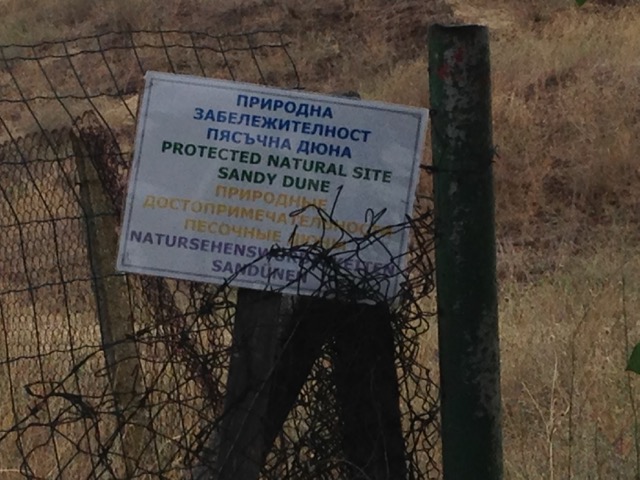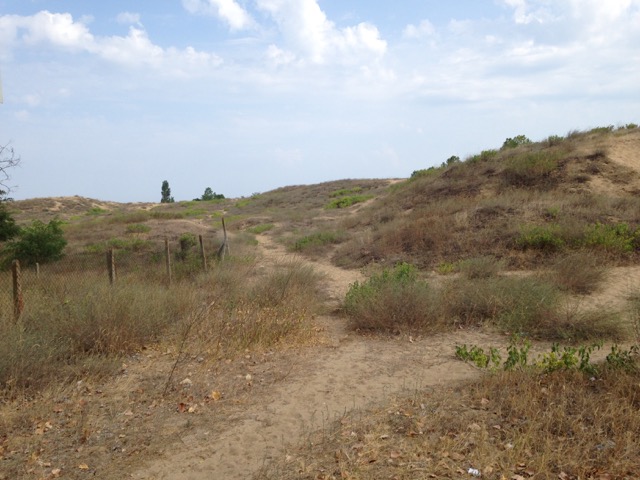After returning home with groceries this morning, I did some research and then went out in search of lunch before the 2PM walking tour. As I turned onto Knez Mihailova Street I heard the amazing violin playing and discovered it was coming from this little girl:
She needs to be in a world class music school, not busking. 🙁
For lunch, still craving meat, a burger made sense and Burger House seemed like my best bet for an “American-style” burger. But this shot is more about the beautiful building at the end of the street!
Next door to Burger House, these were the pub’s specials of the day…
Burger House is a “build your dream burger” joint. I asked for one patty with cheddar cheese, bacon, grilled onions, and honey mustard sauce, with a side of half-and-half — fries and onion rings.
This may be the best burger-fry combo in the world and that is not hyperbole. I am going back there before I leave!!!
At the end of Knez Mihailova Street, you get to Belgrade Fortress. We’ll come back here later on the walking tour, but, basically, it’s a giant park that you can wander freely.
Looking down at the confluence of the Sava and Danube Rivers. The Danube!
Notice that bridge in the distance? It so reminds me of the Provencher Bridge in Winnipeg, which is also at the confluence of two rivers, that I wonder if there is a connection.
I’ve seen a lot of this graffiti with Nikola Tesla’s name and this date. I wish I had remembered to ask my guide about it!
One of the words I learned in Bulgaria is “pesh” (on foot). The word carries over to Serbian in that “peshachka” means pedestrian. My guide told me that Bulgarians and Serbians do not understand each other despite these similarities.
I got back to Republic Square around 1:50 to wait for the walking tour. Since I was a bit early, I walked up a side street beside the National Museum and found a jewelry vendor with lovely wares. I was really disappointed to leave Bulgaria without a pair of earrings, but I didn’t find anything I liked there, not even in Nessebar, and, really, I didn’t get a lot of opportunities to browse as I passed maybe five earring vendors total in the three months I was there. There just weren’t stalls and markets with them the way I’ve seen in Mexico. Here in Belgrade, in just the short span of time I’ve been here, I’ve seen heaps of such stalls, running the gamut of prices. I tend to know what I like and be quite impulsive in my earring purchases. These beauties spoke to me and were just 400RSD (5CAD):
I then went back to Republic Square to start the tour, but something weird happened. The guide said to me, “You’re looking for another tour. Go wait at the clock.” I didn’t question why I couldn’t join his tour. I’d done some research and knew there are several different walking tours by different outfits and that the 2PM tour didn’t really have much of what I wanted to know more about. So I took that as a sign to go home for a rest and try again at 4PM with a different tour.
I got back to Republic Square at 3:45 and the guide said we would start at 4:05. It was chillier than expected after the hot afternoon, so I said I was going to go home and be right back, which I was, fleece in tow!
Republic Square is Belgrade’s anchor. People meet at “the horse,” even though the person on the horse (Knez Mihailova — Prince Michael) is more important. But the statue has been called “the horse” since at least the early 19th century.
I learned that the National Museum has been closed for ages and that the reopening keeps getting delayed for lack of funding. 🙁
But the National Theatre has been in continuous operation since it was built in the 19th century, its programs running even through all the wars.
We headed off to the Bohemian Quarter, Skadarlija or Skadarska Street. Let me pause here to say that, like always, my review of a city tour is in no way going to encompass everything I learned. There’s just too much to remember!
This street is lined with pubs and “kafanas,” the Serbian answer to the pub. It’s a drinking district. I asked if it’s safe for a single woman to be out after dark and have a few drinks and our guide, Luba, said absolutely and that Belgrade does not have any “bad” neighbourhoods. The worst that will happen is you will get scammed by a taxi, something that even happens to locals!
I am definitely going to come back here to have a drink!
By the way, it was here that I learned that Serbia is the only European country to have two writing systems that are used equally and interchangeably. Most Serbians favour using Latin letters.
Since it is a drinking street and people have a hard time staying on their feet, this helpful sign tells drunks that the moon is that way, so, obviously, the ground is the other way…
These are kafanas. They have booze, coffee, light local fare, and live music past 8PM. I think they are best described as a cross between a bistro and a pub.
This is where Luba pulled some rakia (fruit brandy) out of her bag for all of us to try!!! I had rakia in Bulgaria, where it is also popular. This was honey rakia and it was really lovely!
This is a statue of a famous Serbian poet outside the house he shared with his wife and ten children. He wanted a house on the drinking street and died from an alcohol-related disease at the age of 40. What a shame. He was actually lauded in his lifetime, so he must have been very good!
This is a chimney from an old beer brewery owned by a Czech.
We continued on and stopped here to talk a bit about the history of Belgrade in terms of armed conflicts and the geo-political situation. Way too much there to get into in this post! The damage on this wall apparently dates back to WWII! Luba explained that Belgrade has such a hodgepodge of architecture — Turkish, 19th century, and Communist, among others, is that every time a building was destroyed in a bombing, a modern building of the day was erected in its place.
This is the Museum of Vuk and Dositej. From Wikipedia (echoing what the guide told us!): “one of the most important memorial museums in Belgrade, the capital of Serbia. Founded in 1949, it depicts the life, work and legacy of Vuk Stefanović Karadžić (1787–1864), the reformer of the Serbian language, and Dositej Obradović (1742–1811), a writer who was the country’s first Minister of Education. The museum is a crucial site for understanding the revival of Serbian culture at the time of the First Serbian Uprising against the Ottoman Empire.”
This is where I won a prize for being the tour member who has made the most progress with the Serbian language! Really! LOL This is a special glass for drinking rakia. I’m wondering if I can find a place in my luggage for it as I really would love to get it home…
Here’s the minaret of the last remaining mosque in Belgrade. Most of Serbia’s Muslim population is in the south.
We then made our way to Kalemegdan Park, which is open 24/7, and which is also the site of the Belgrade Zoo and the Belgrade Fortress. The zoo boasts the oldest known alligator in the world!
The fortress is a series of fortifications, but there’s no castle in it or anything like that, as such construction kept getting destroyed and so there was no point to making the effort to build anything. The fortress is on prime real estate to protect the city and so has been a prized treasure during many conflicts.
Here, you can see some of the original Roman limestone that once surrounded the city and gave it is name, ie. “the white city.” Beo is white and grad is city. I forgot to ask how Beo became Bel in English and French.
Looking again at the confluence of the Sava and Danube Rivers.
This is the Sava.
This giant statue of a naked man represents victory.
Looking out to New Belgrade, which was built after WWII on reclaimed marshland. It’s mostly a residential and business zone and Luba told us it’s not worth a visit by tourists.
As we finished our tour of the fortress, Luba spoke some more about conflicts in Belgrade, including the 1999 NATO bombings. I’m exactly 10 years older than her and was 20 when that was going on, so I have a pretty clear memory of news reports about the bombings. It was fascinating to hear what it was like over here compared to the media coverage in Canada. The bombings were announced and were strictly on infrastructure, so there was little loss of life and not much disruption to daily activities. Serbia has yet to recover financially from the bombings.
Again, there is way too much history to go into here, but Luba emphasized that the bombings had nothing to do with the conflicts going on in nearby areas, including what is now Bosnia and Herzegovina, but were in response to Serbia’s relationship with the disputed state of Kosovo. This is a part of the world with a particularly convoluted and complicated history and 20 years beyond peace, it is obvious that there are still tensions that keep Serbia from moving forward.
We then headed out to our final stops. While we were told that New Belgrade isn’t worth a visit, we were advised to try to make it to Zemun, an old community that dates back to the days of the Ottoman Empire and which is now part of Belgrade.
I wish I could remember what this building is all about, beyond it being the home of the mother of Knez Mihailova.
This is the top of the largest Orthodox cathedral in Belgrade.
I learned that each country has its own Orthodox church with its own leader. There is no central Orthodox leader like the Pope for Catholics. This is the seat of the Serbian Orthodox church.
This is the palace of Princess Ljubica.
An example of three styles of architecture side by side:
The Question Mark kafana. It was the kafana by the church, but the priests complained to the authorities. The owner removed the sign and put up a question mark while he searched for a new name, but the question mark stuck!
Our last stop was a school where basketball was first played in Belgrade.
This is where we learned about the time that Bulgarians were billionaires, during a period of hyper inflation. This was around the mid-1990s and Serbia’s hyper inflation was second only to Zimbabwe’s. We all got one of these bills!
The tour was free, but a tip was welcome. I thought 500RSD would be fair and that turned out to be the suggested tip. This was an amazing tour! Luba was very knowledgeable and her English was excellent. I did not come close to doing justice to all that she taught us!
It was just past 6:00 at this point and I was done for the day. I just wanted to unwind with a beer and then get a takeaway to eat at home.
Going down the pedestrian street, I was amused to hear a bagpiper!
In my comings and goings from home today, I had spotted a kafana, Zora, on the opposite side of the block from where I live (basically across the street) and decided to check it out since they make their own beer. I went in and the bartender spoke English, so I was able to ask for recommendations. He said they do a number of fruity beers, but he recommended their lager. That sounded good, and it was! It was a bit cloudy and citrusy. I nursed it for almost an hour, enjoying American music from the ’90s (interesting, that’s what frequently gets played in Bulgaria, too), especially the Bon Jovi! A pint of good beer here was 200RSD (about 2.50CAD). Wow! A pint of average commercial stuff in Canada is about 5CAD and it’s about 7CAD in London!
I then headed across the street to get a slice of pizza. They were down to the dregs, but this looked good, and it was! The salami was super spicy, but the sesame seeds on the chewy crust were inspired. Pizza out here in the Balkans has yet to disappoint! But like Bulgarians and Mexicans, Serbians put mayo, ketchup, and sometimes hot sauce on their pizza and look at you funny if you decline!
It has been a really full and great first day in Serbia’s capital. I will do a few museums tomorrow since they will be closed on Monday. I’m not sure yet what the rest of the week will look like and it will depend on my work load.


